Summer in St. Johann im Pongau, Austria is a centre for adventure in the Salzburg Austrian Alps – home to deepest gorge, the hiking point to one of Austria’s best mountain viewpoints, and next to the biggest ice cave in the world.
The Salzburgerland region might be better known for its state capital of Salzburg, but 60 kilometres south the smaller city of St. Johann im Pongau is a local getaway from the big city, whose surrounding peaks form part of one of the area’s largest ski areas.
In summer, however, this compact alpine city doesn’t sleep. The St. Johann Alpendorf ski village hotels remain open, as does the cable car on its doorstep to whisk you up high, and the 120km of ski slopes turn into meadowed hiking trails surrounded by a crisp blue-skied panorama of 300 mountain peaks.
The activities and attractions in St. Johann im Pongau need time – a destination largely overlooked after people visit the famed Liechtensteinklamm and move on. At least two days here affords a new perspective on the area filled with enough scenic surroundings for relaxation and enough high peak trails for pristine panoramic vistas. I got invited to see for myself how it is after winter, and here’s what I found.
How to Enjoy a Salzburg Summer in St. Johann in Pongau
Visiting the Liechtensteinklamm – longest and deepest gorge in the Alps
Liechtensteinklamm is a world-famous gorge, and we set out on the 15-kilometre walk that would take us 300 metres downward within the curved and bumpy cavern walls that transition from silvery blue and orange hues depending on the light that creaks through.
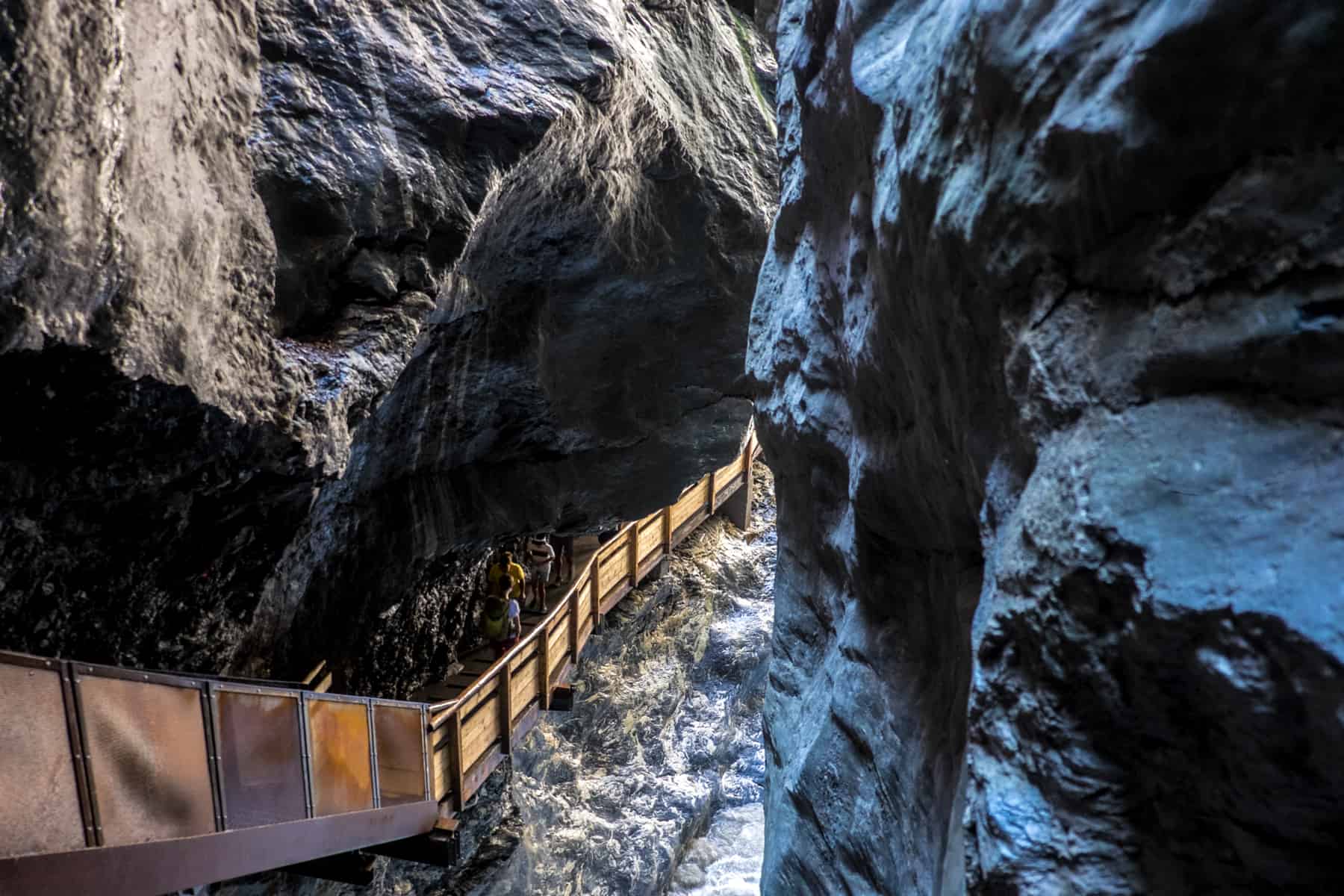
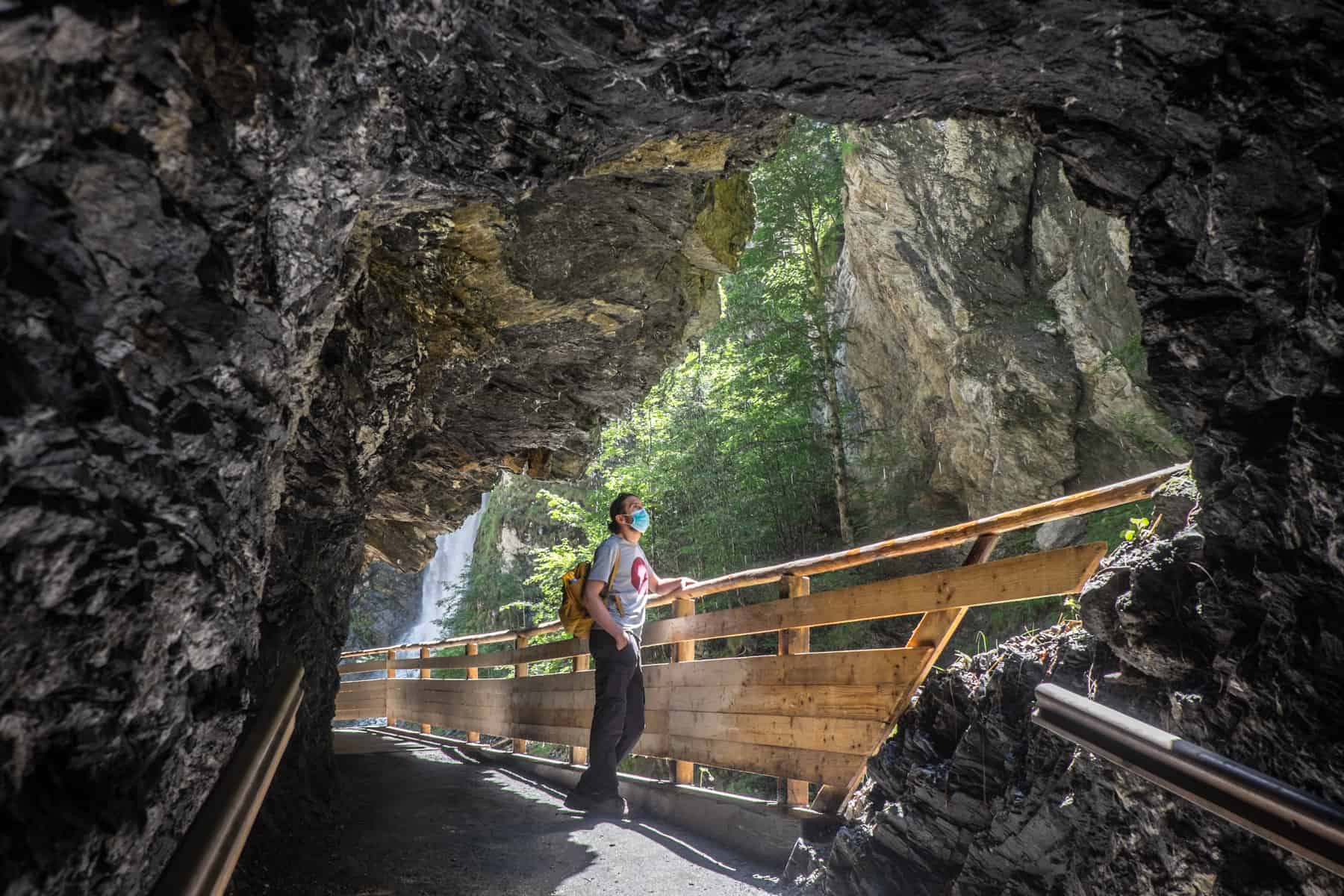
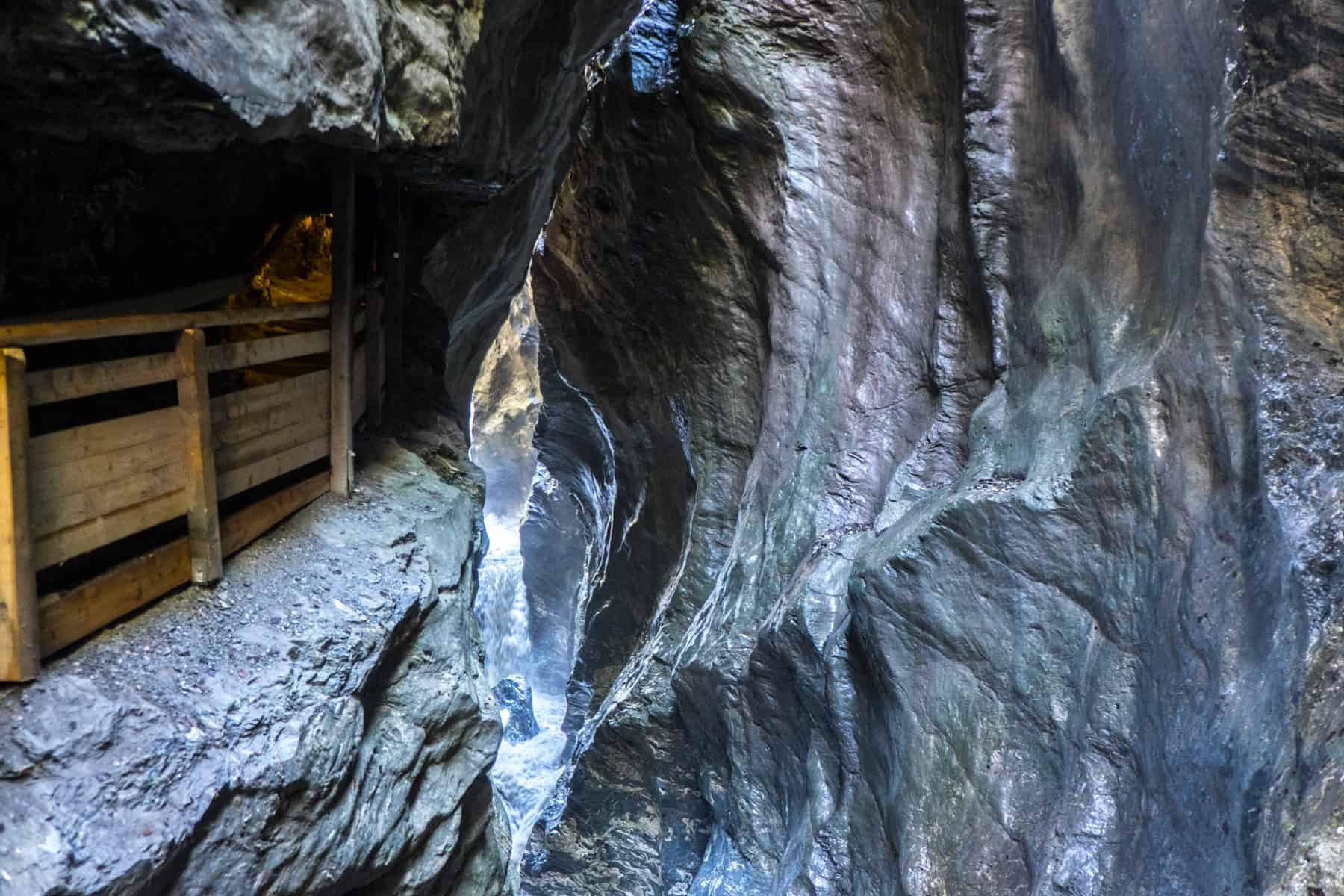
One of the longest and deepest gorges in the Alps, visitors have been coming here for centuries to stand and listen to nature in its force. To watch the water crash and tumble against the mighty rock walls and follow the ravine as it loudly rumbles and drops over large boulders.
The area was made accessible in 1875 after the Prince of Liechtenstein donated money for the building of ramps and walkways. Today, consistent maintenance of the area ensures safety measures are in place, with iron and steel beams and solid wooden passageways moving you through the gorge without detracting from or obstructing the nature enclosing.
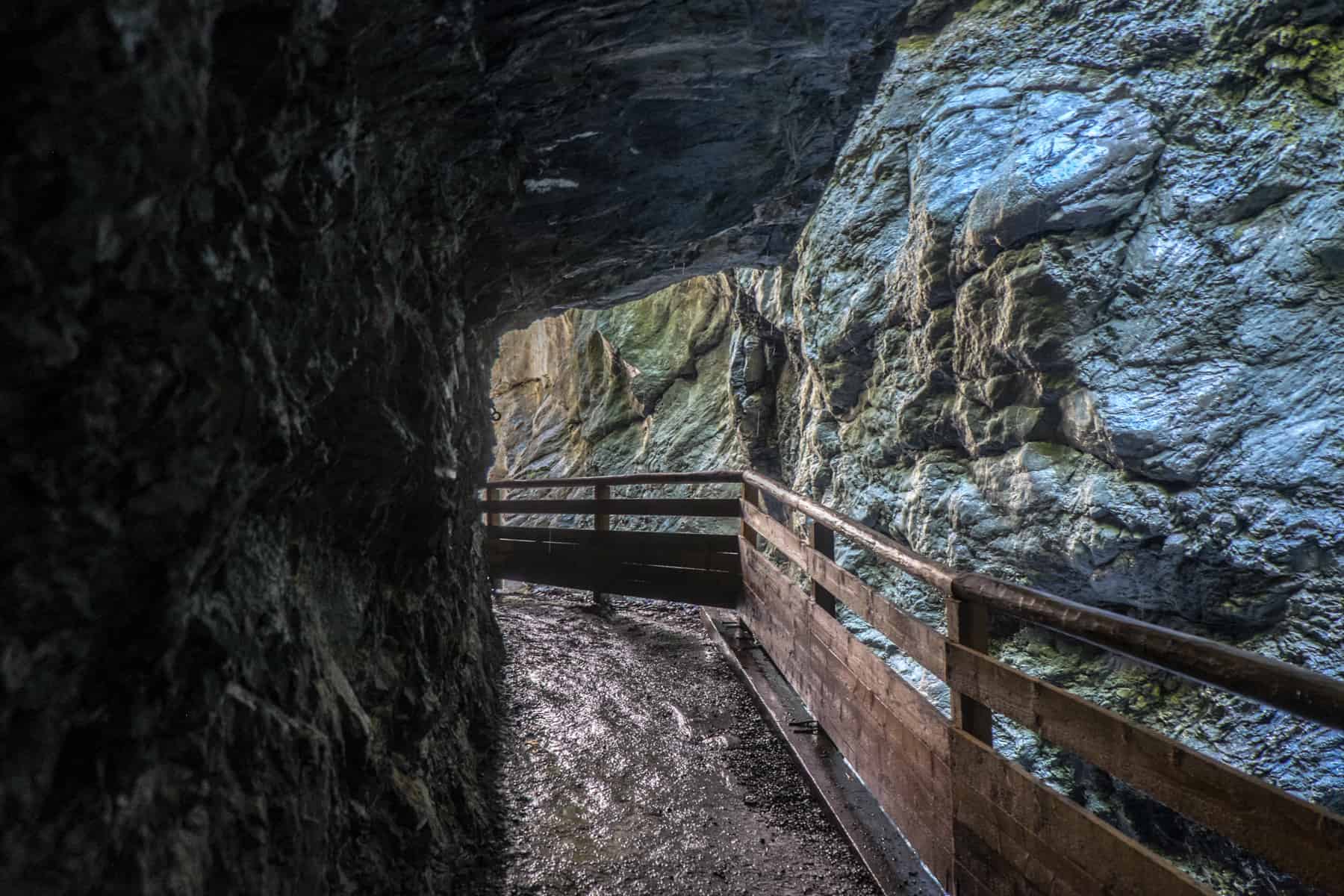
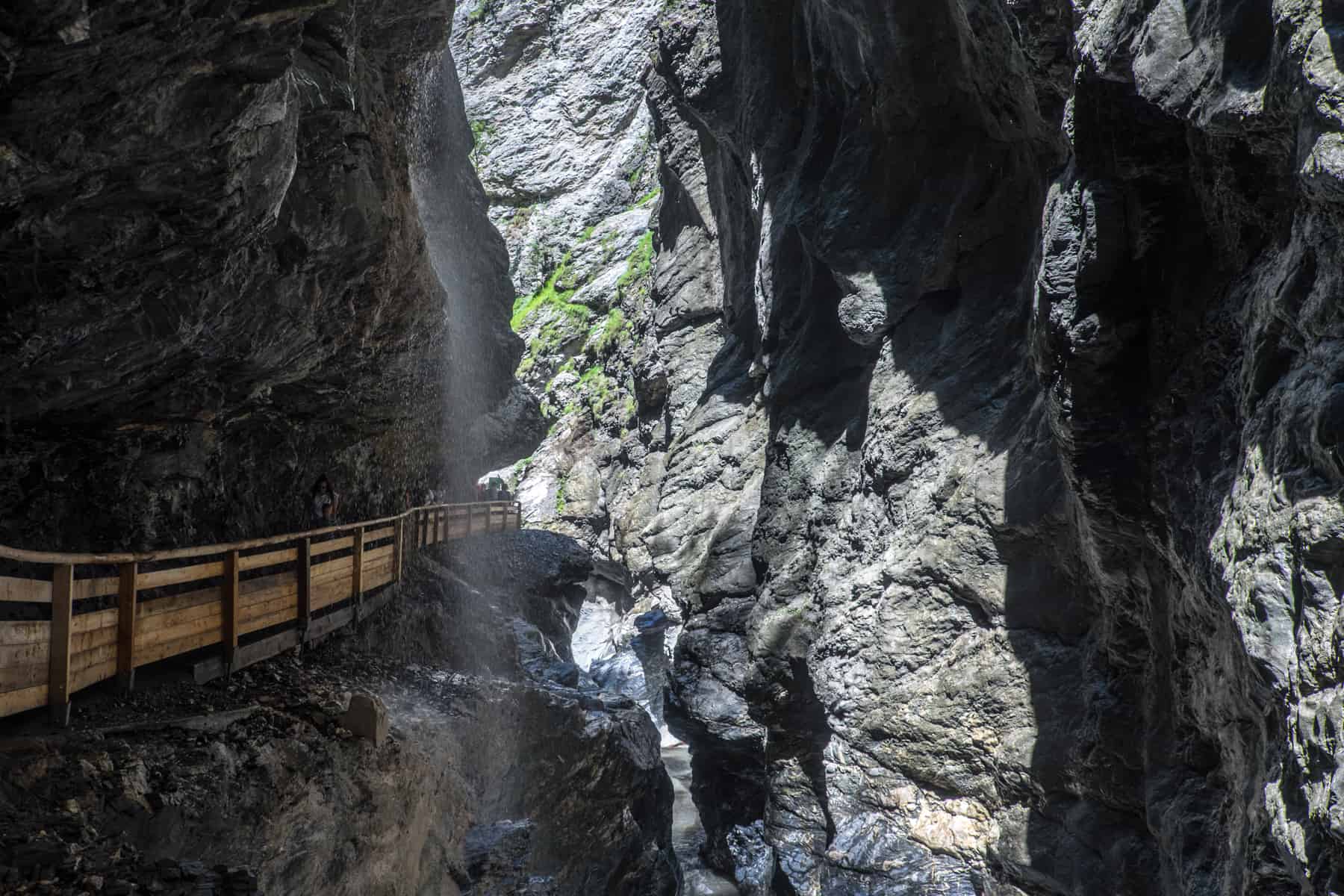
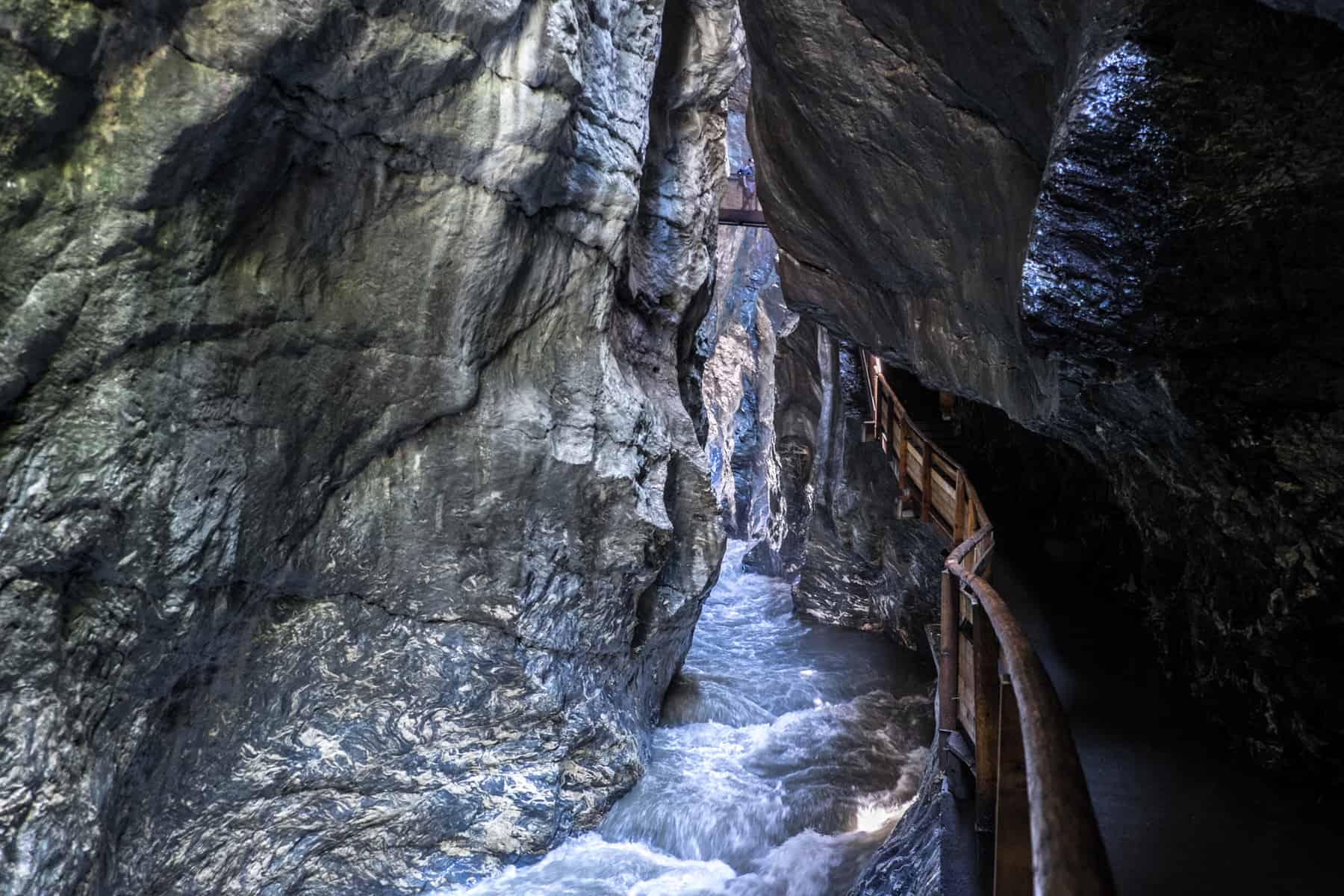
The addition of the illusory, giant copper-coloured ‘Helix’ spiral staircase is a fun addition to get you deeper into the cave-like complex as you work your way towards the roaring water’s cascading source – the waterfall.
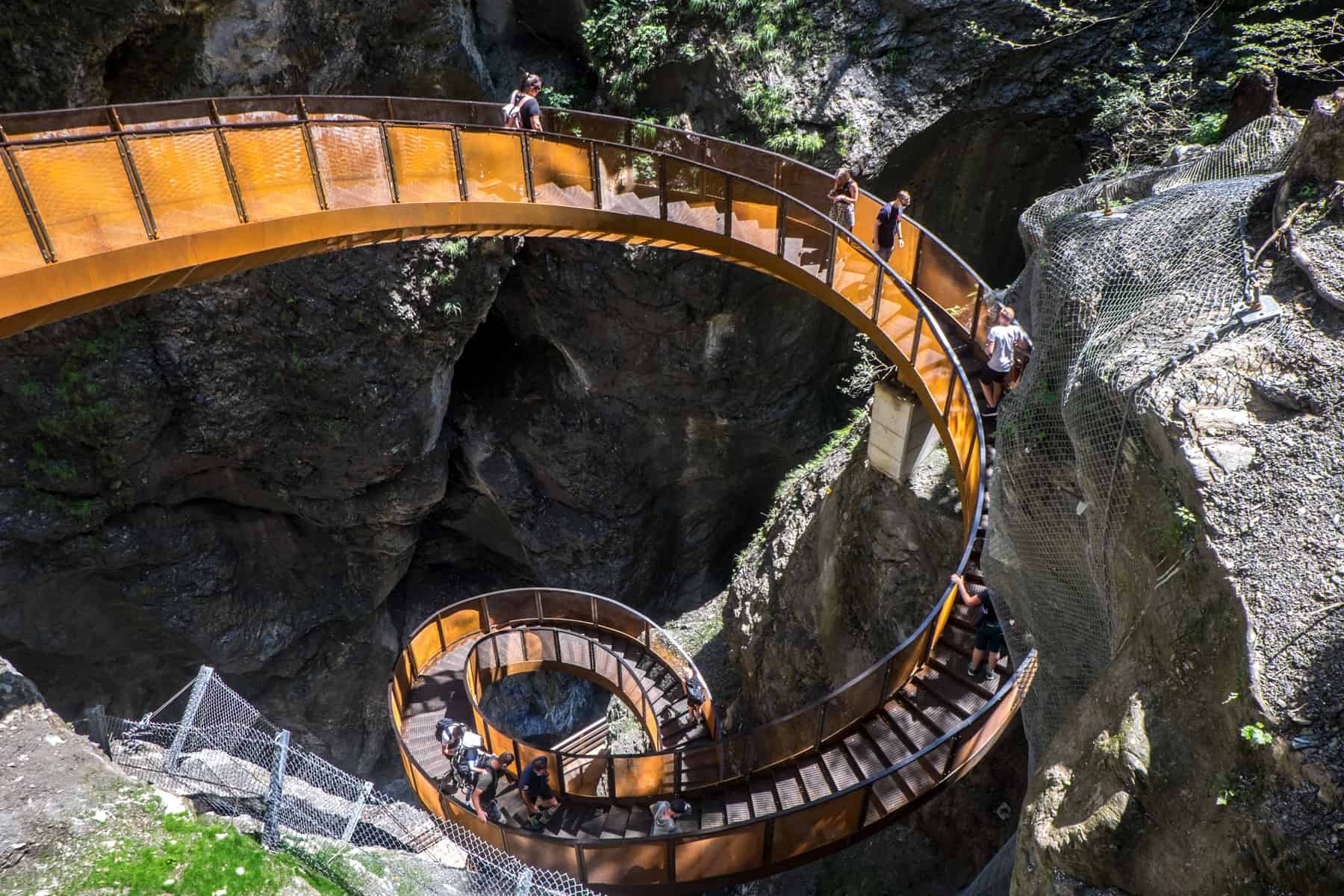
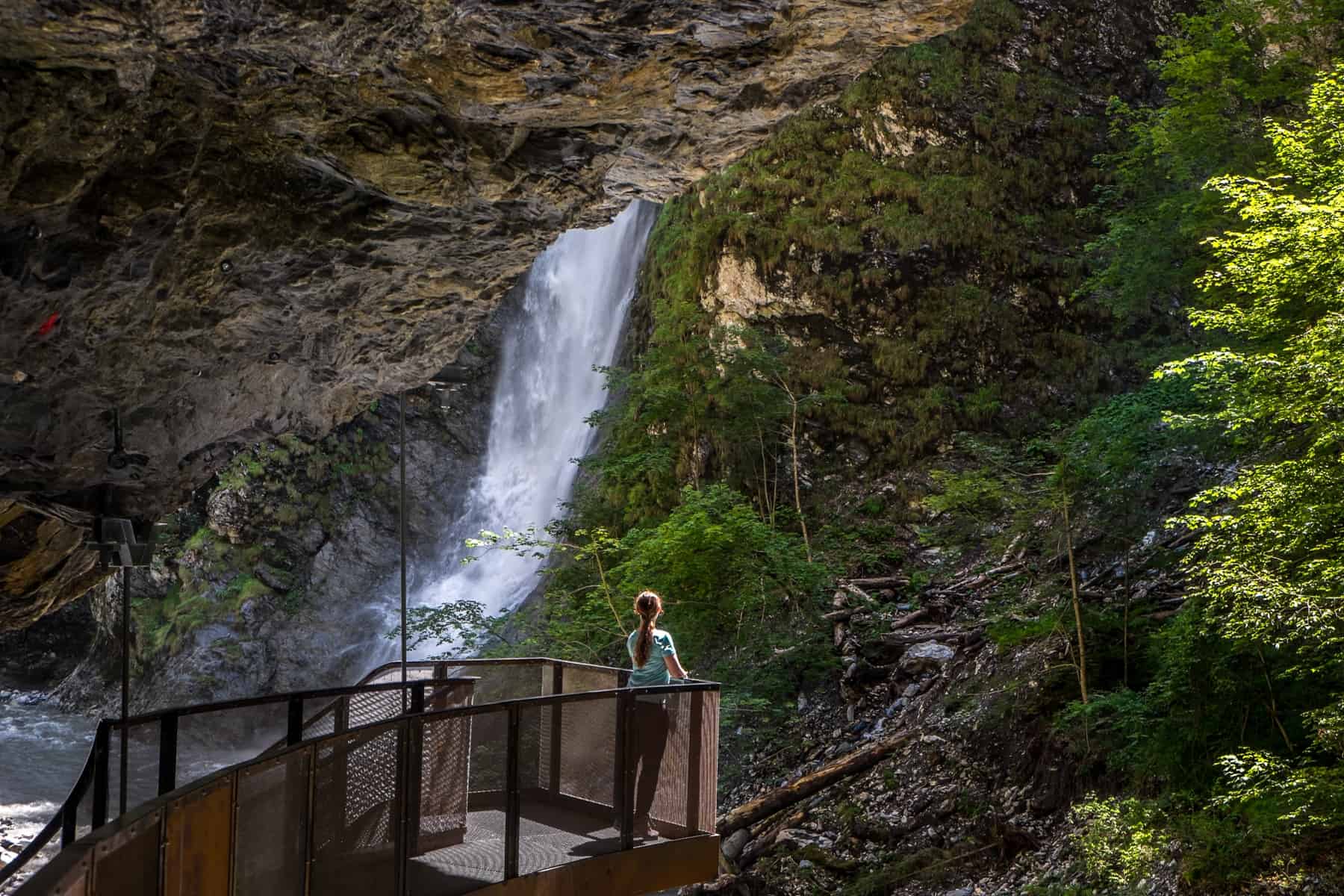
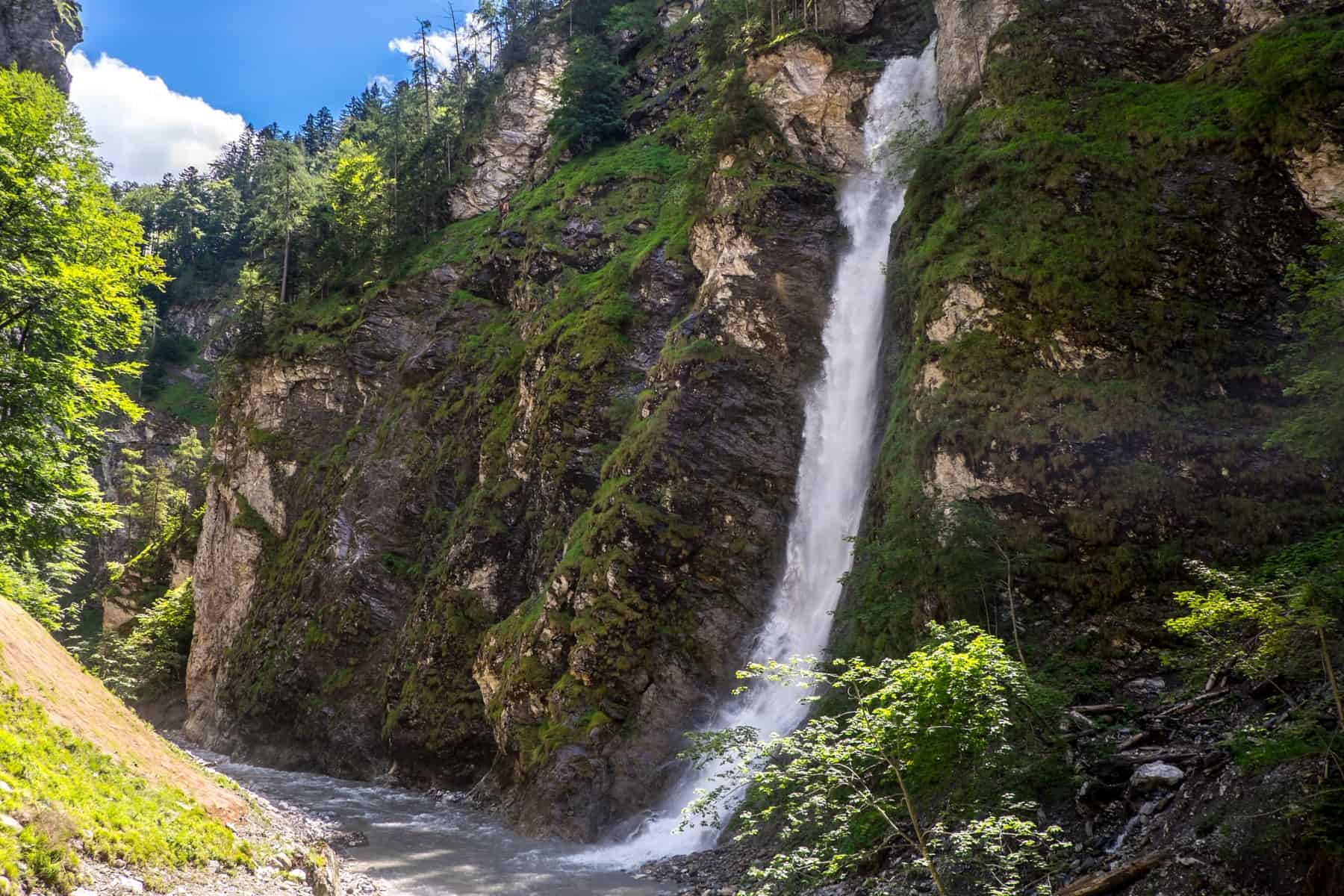
Treat this area as you would a hike – with decent, sturdy footwear with good grip and warm, layered clothes. It can get chilly in the tunnel walkways but gets more heated when you come out into the open spaces. We visited after midday to avoid the morning rush, which is busiest between 10-2.
Hiking the Hochgründeck Mountain – the Best View in Austria
There are 16 hiking routes of varying levels of difficulty on marked trails in and around St. Johann im Pongau, to mountain huts, lake and scenic peaks. You can chose the more leisurely hike along the Salzach stream or the panorama loop around the Alpendorf, up the ante and find the Jägersee mountain lake, clamber the Hochglocker mountain, or tackle the more difficult Heukareck and Schuhflicker peaks.
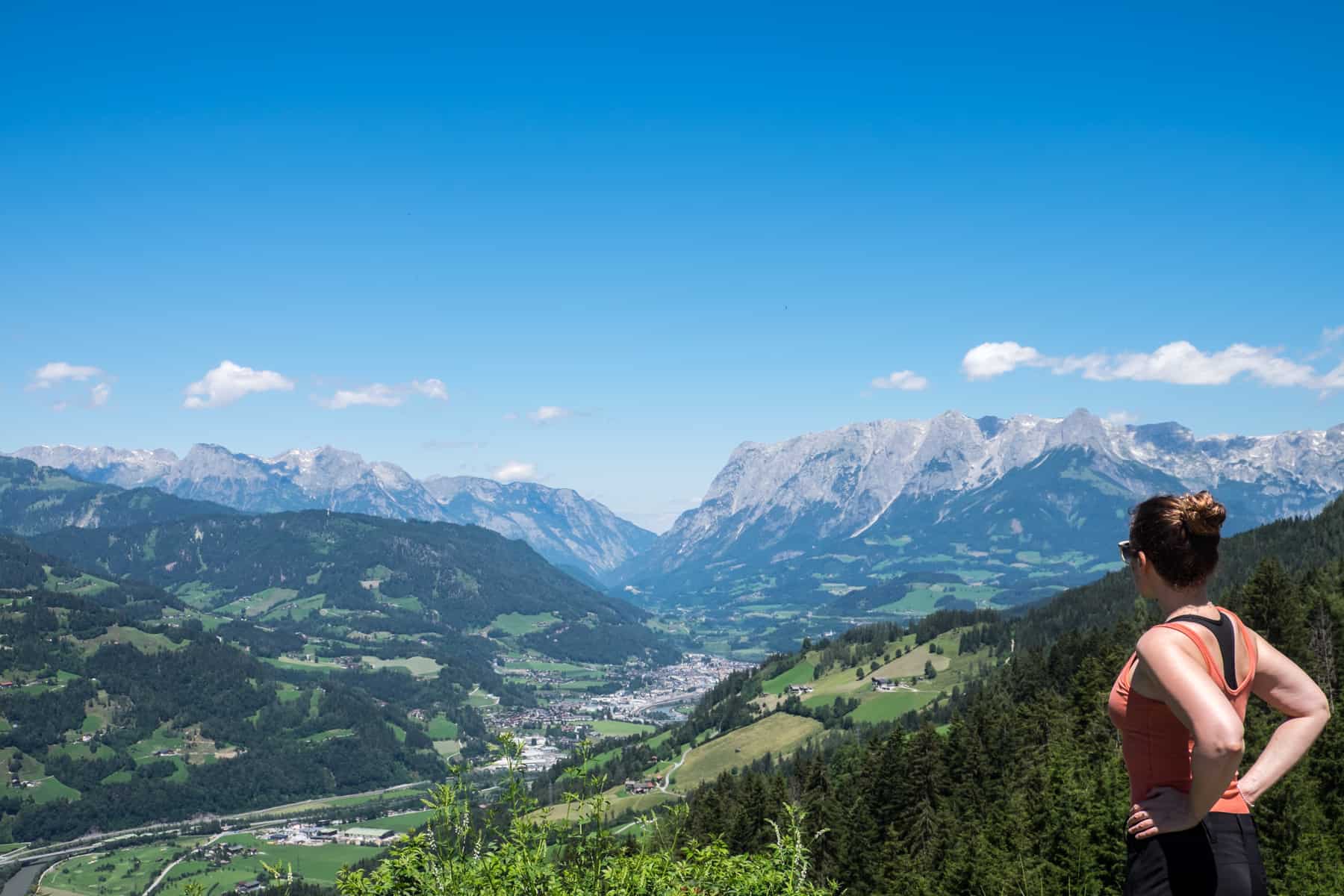
However, we chose the moderately strenuous hike to the Hochgründeck for two reasons. Firstly, Hochgründeck is one of the highest forested mountains in Europe, and secondly, the view from the top at 1827 metres is one of the best in all of Austria.
We parked the car at the bottom of an agricultural area and the Stein-Bauer car parking area, where tractors tend to the towering fields. The signposted hike starts here and passes through some steep forested sections that intersect the road before venturing back into what feels like a vast hinterland. This path connects to a dense and shaded woodland, lined with a long window to bountiful alpine pastures that poke through the curtain of trees, up to the Gründeck ridge – the start of the last steep onset towards the Hochgründeck itself.
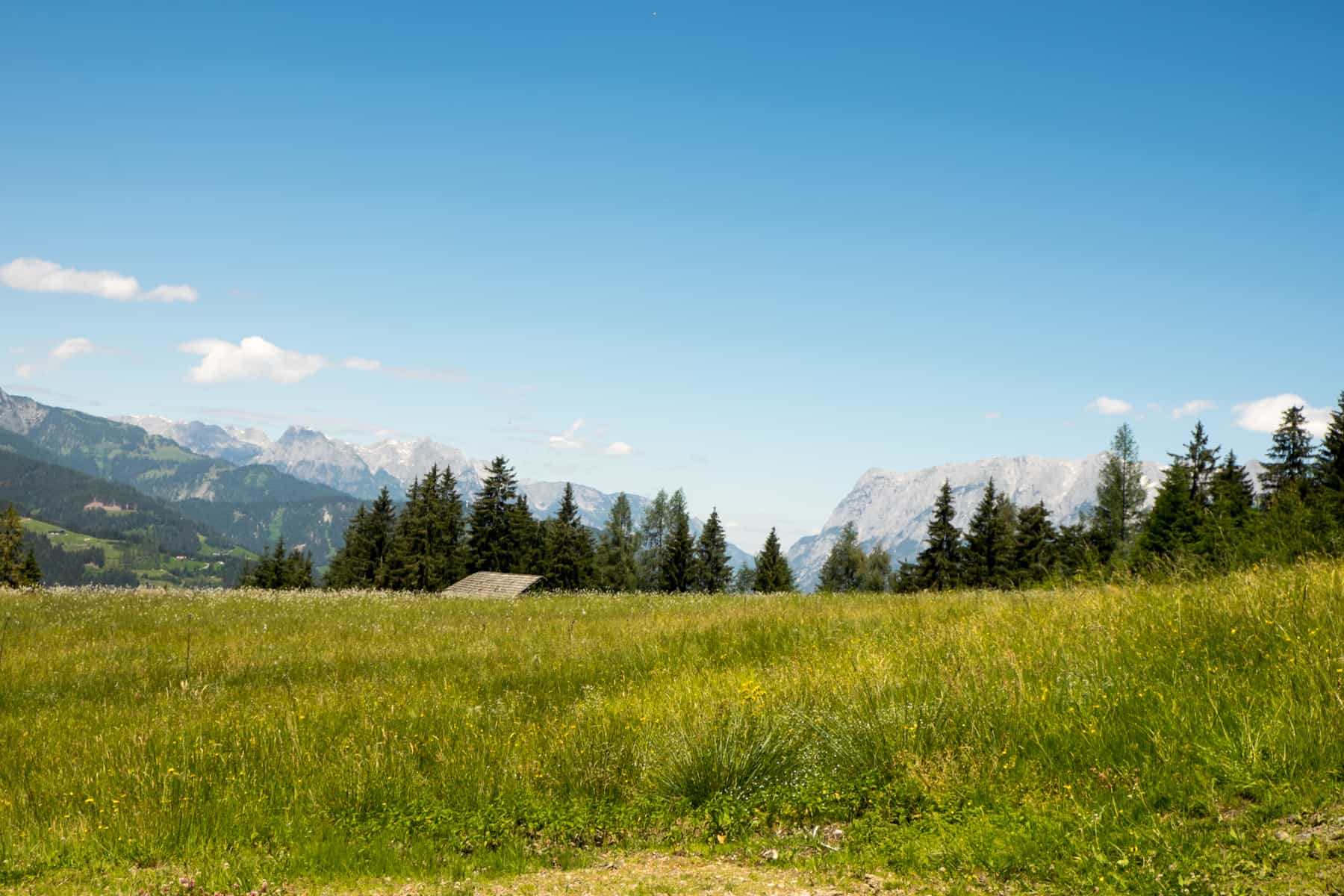
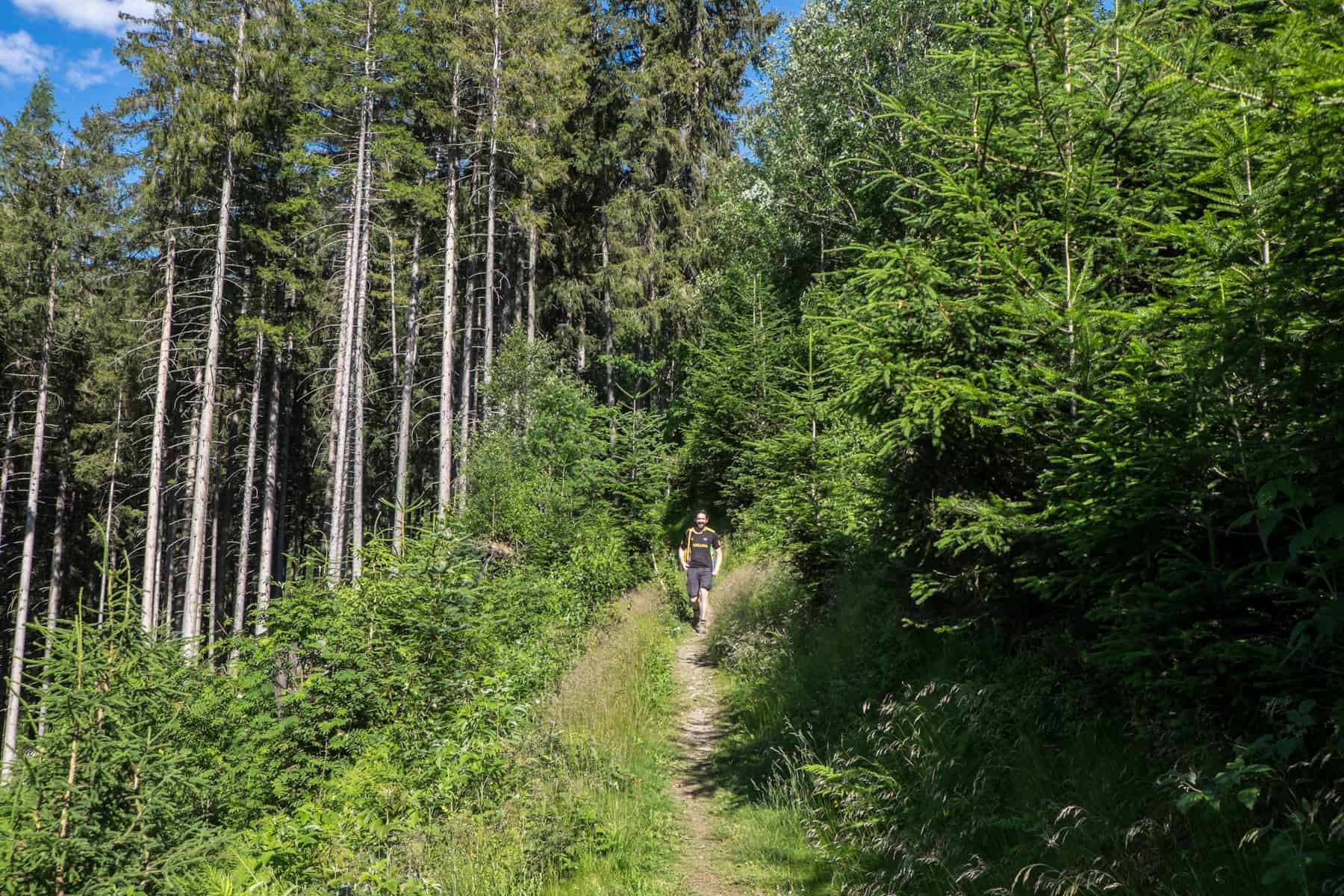
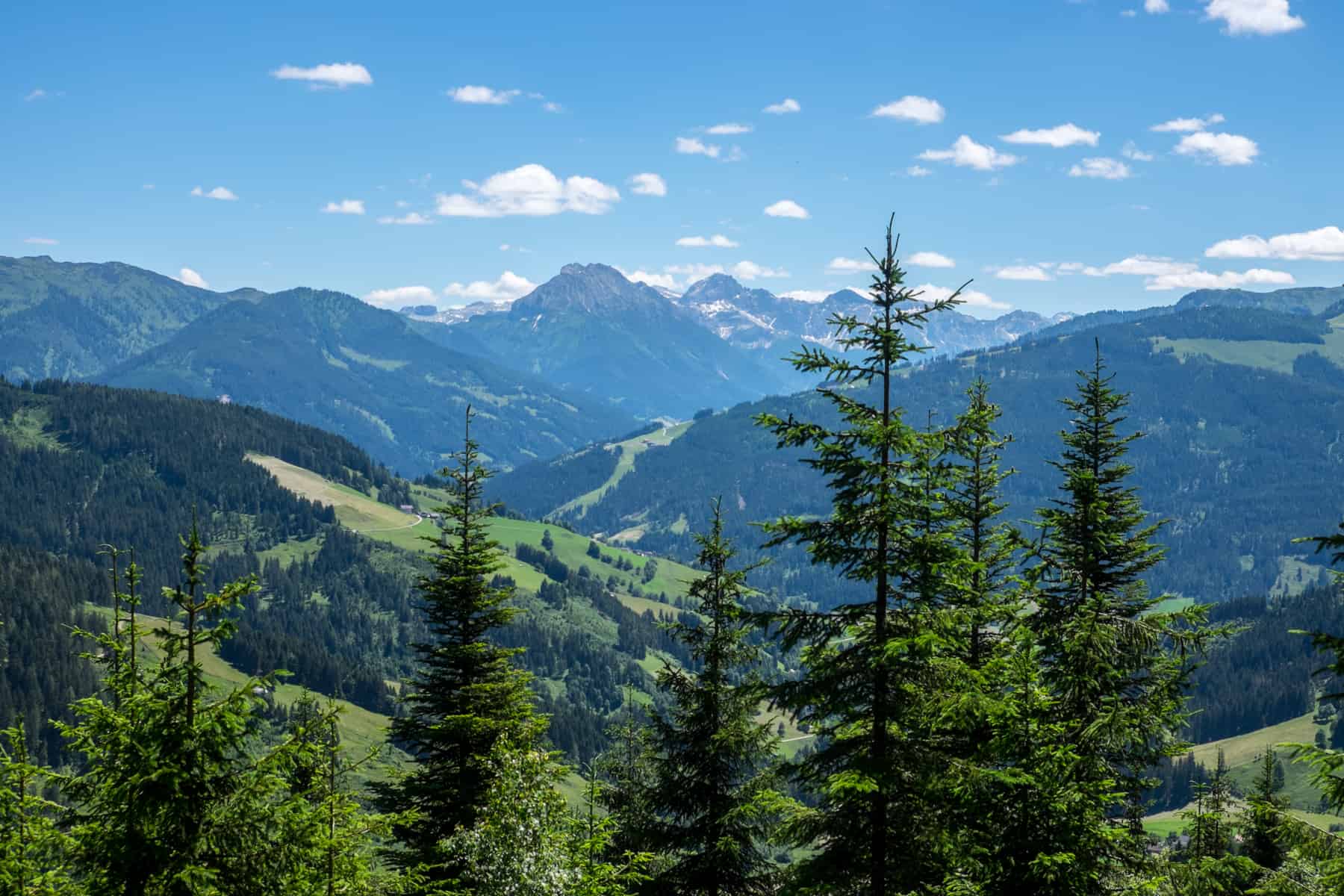
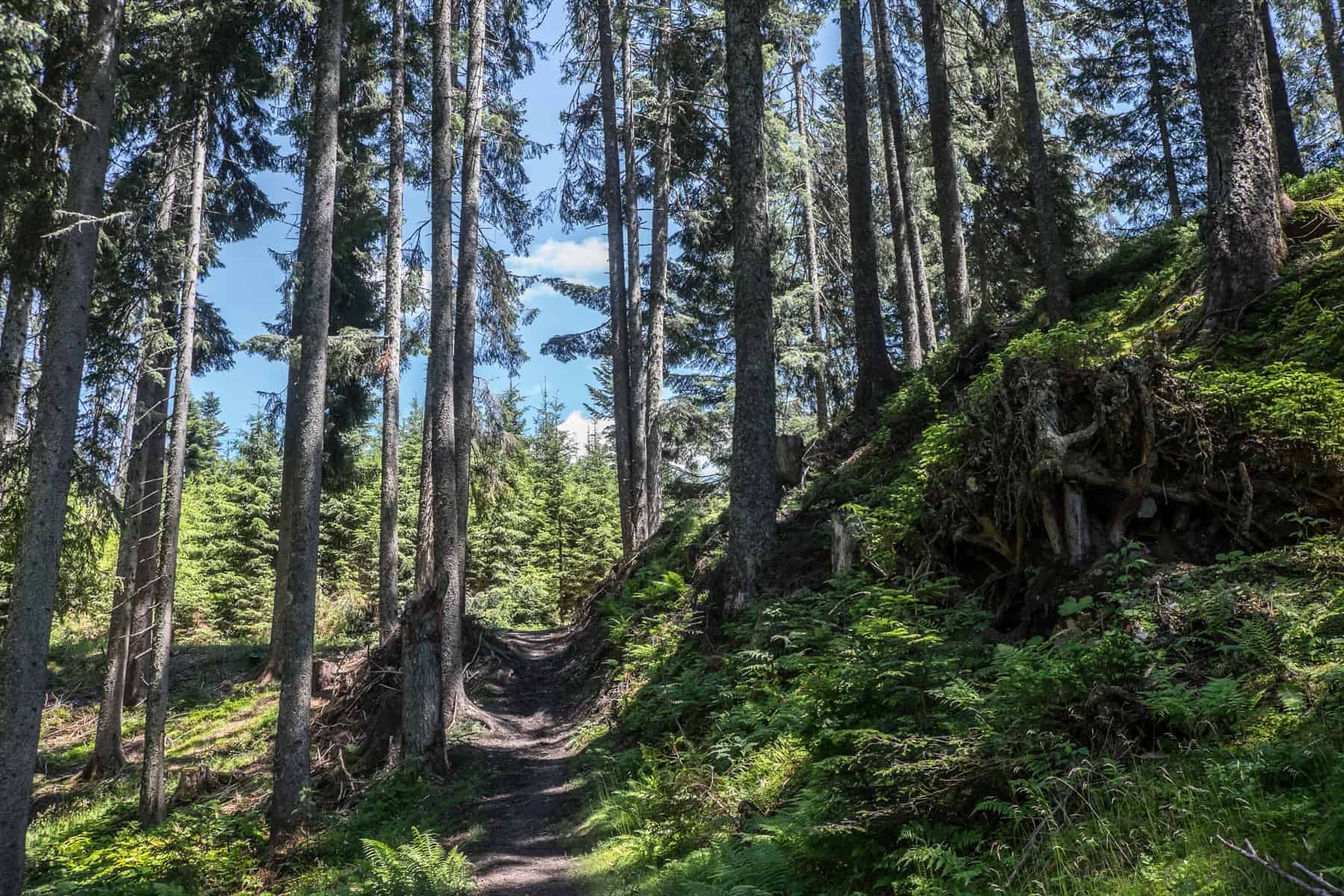
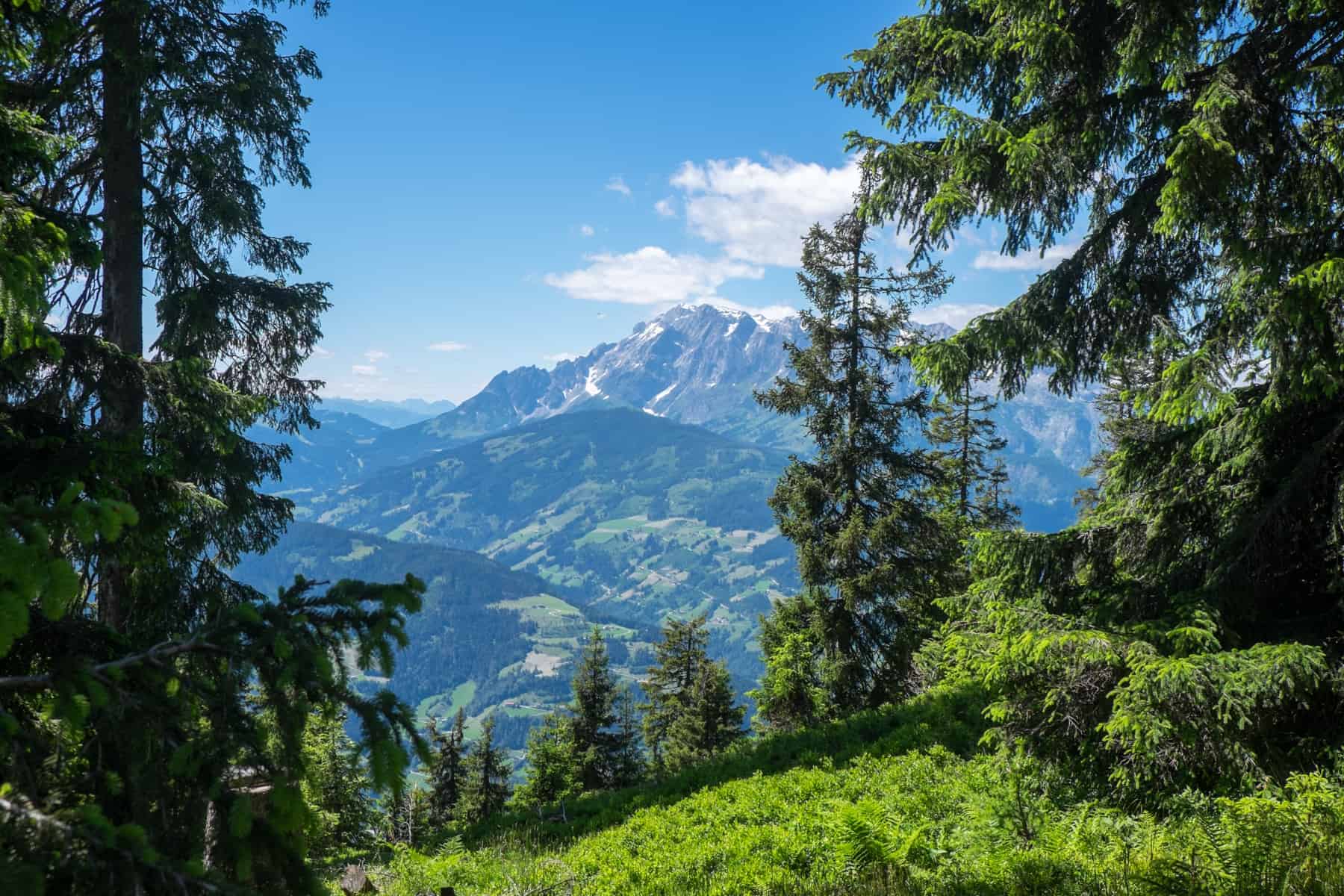
It’s a three-hour trek that required some stamina, but on this occasion, the reward was one of the most impressive panorama views from a hike I’ve ever seen. Reaching the mountain hut Heinrich-Kiener-Haus, the scenery opens out into a magnificent blue-green-white panorama – the type of dramatic 360-degree vista I’ve only witnessed at mountain heights when skiing.
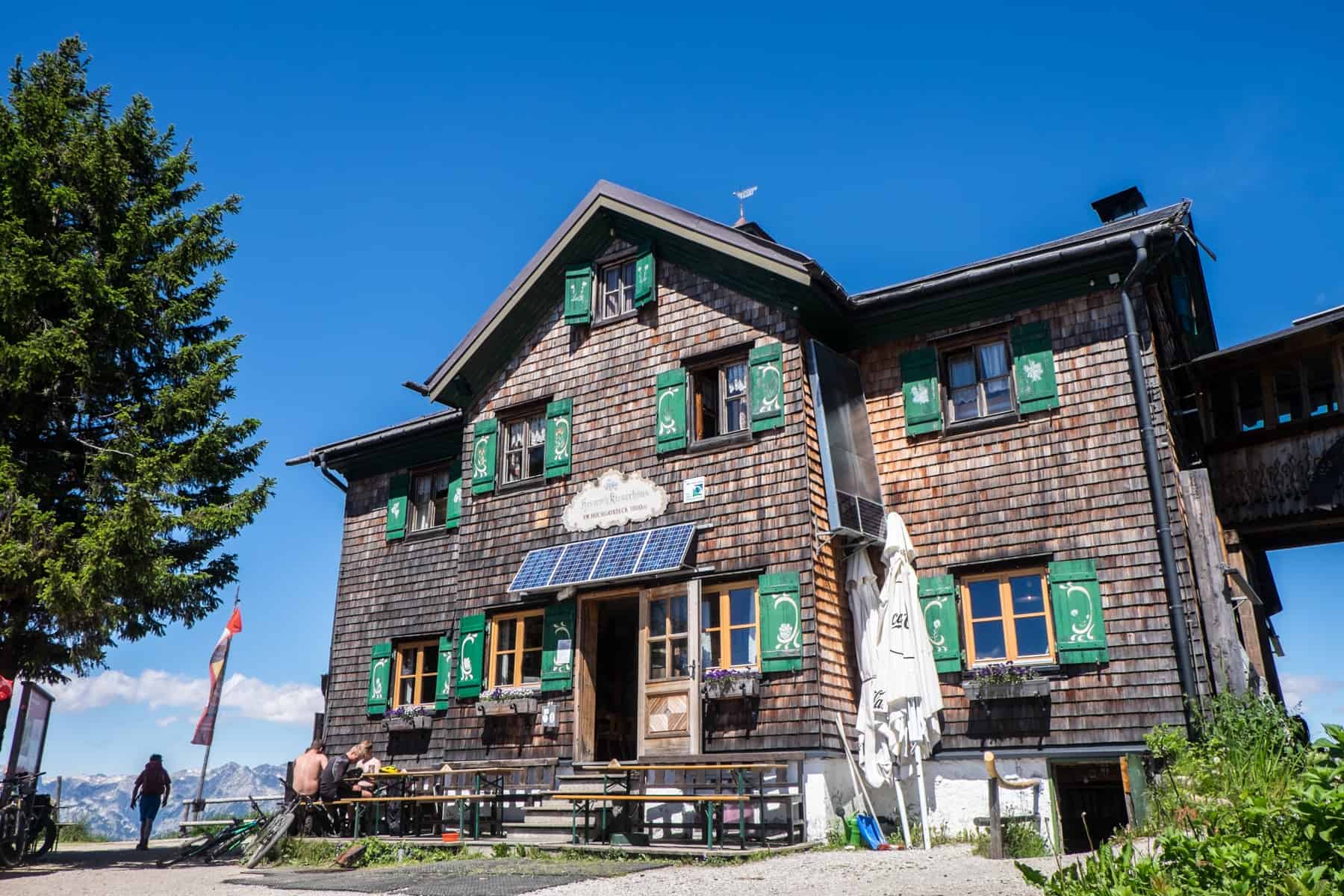

It’s a dizzying sweep of over 300 peaks including Austria’s highest mountain, the Großglockner at 3798 metres in the Hohe Tauern range, as well as the Hochkönig, Tennengebirge, Dachstein, Niedere, Kitzbühler Alpen and Dientner Alpen. A few familiar mountain range names that make you feel as if all of Austria is on display right in front of you. Which is practically is.
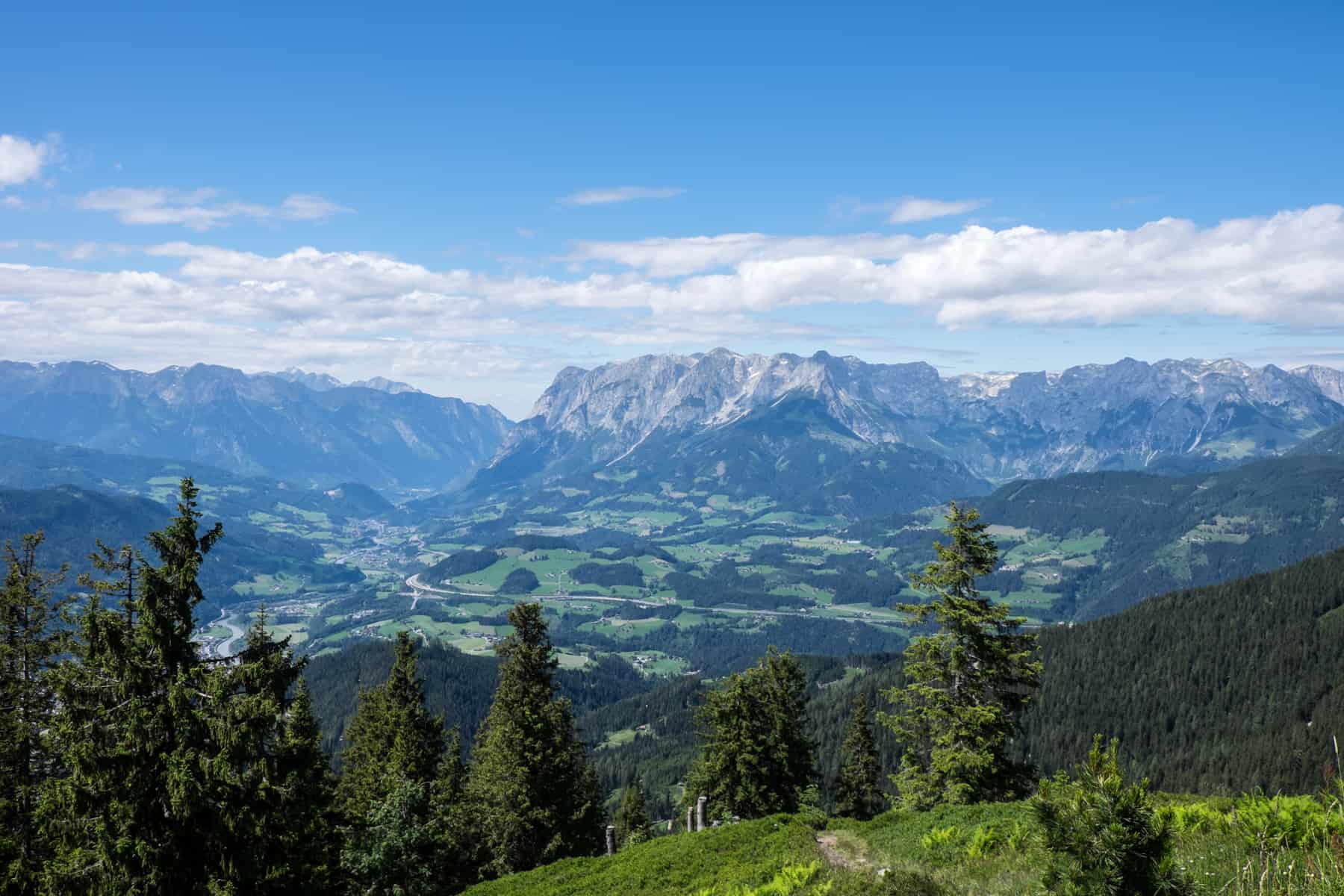
From the hut, it’s worth continuing on the brief stretch past the beautiful Friedenskapelle dainty church on the hilltop and through the rolling green to the mountain cross. It’s a chance to complete the blind spots of the panorama scenes from the hut.
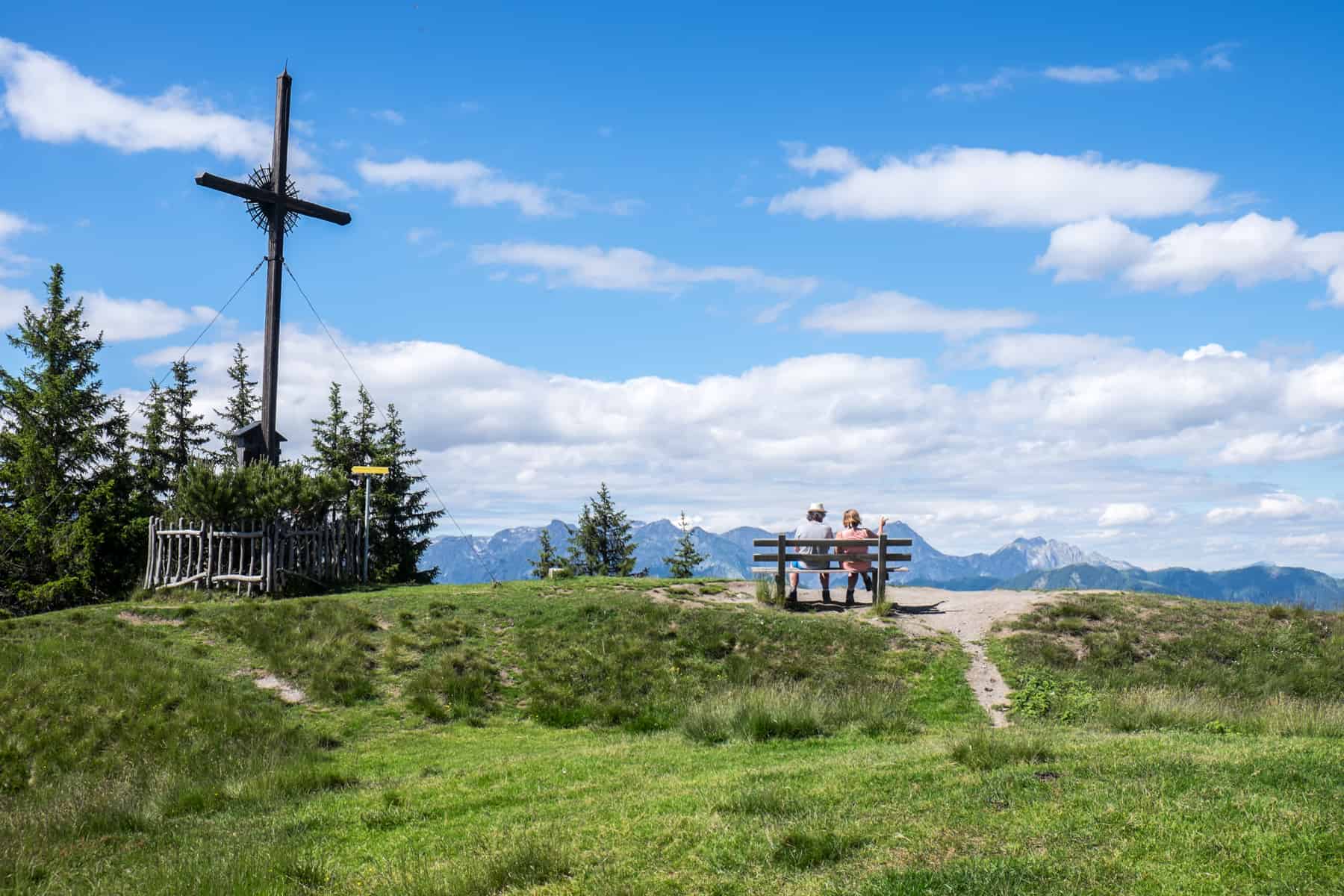
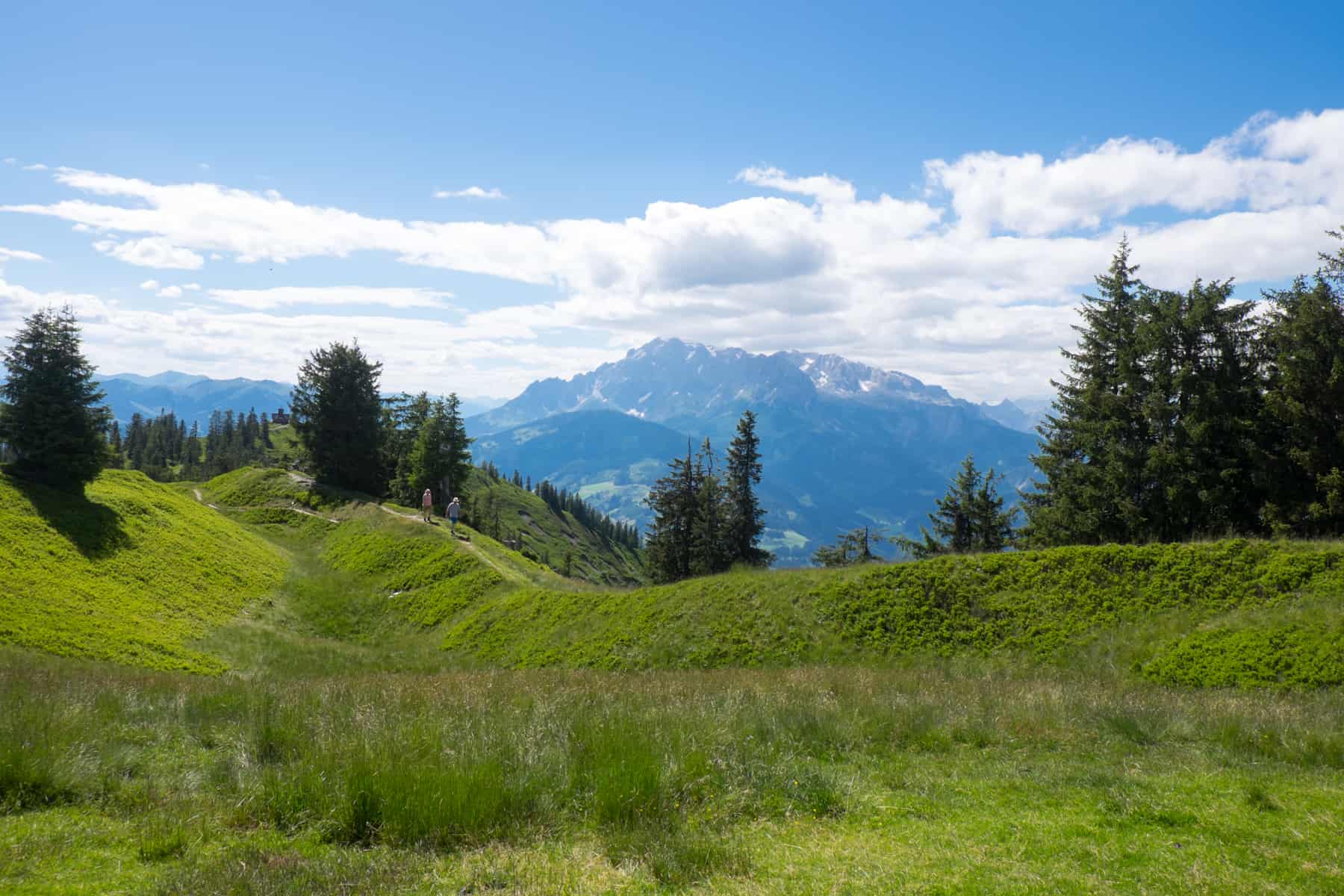
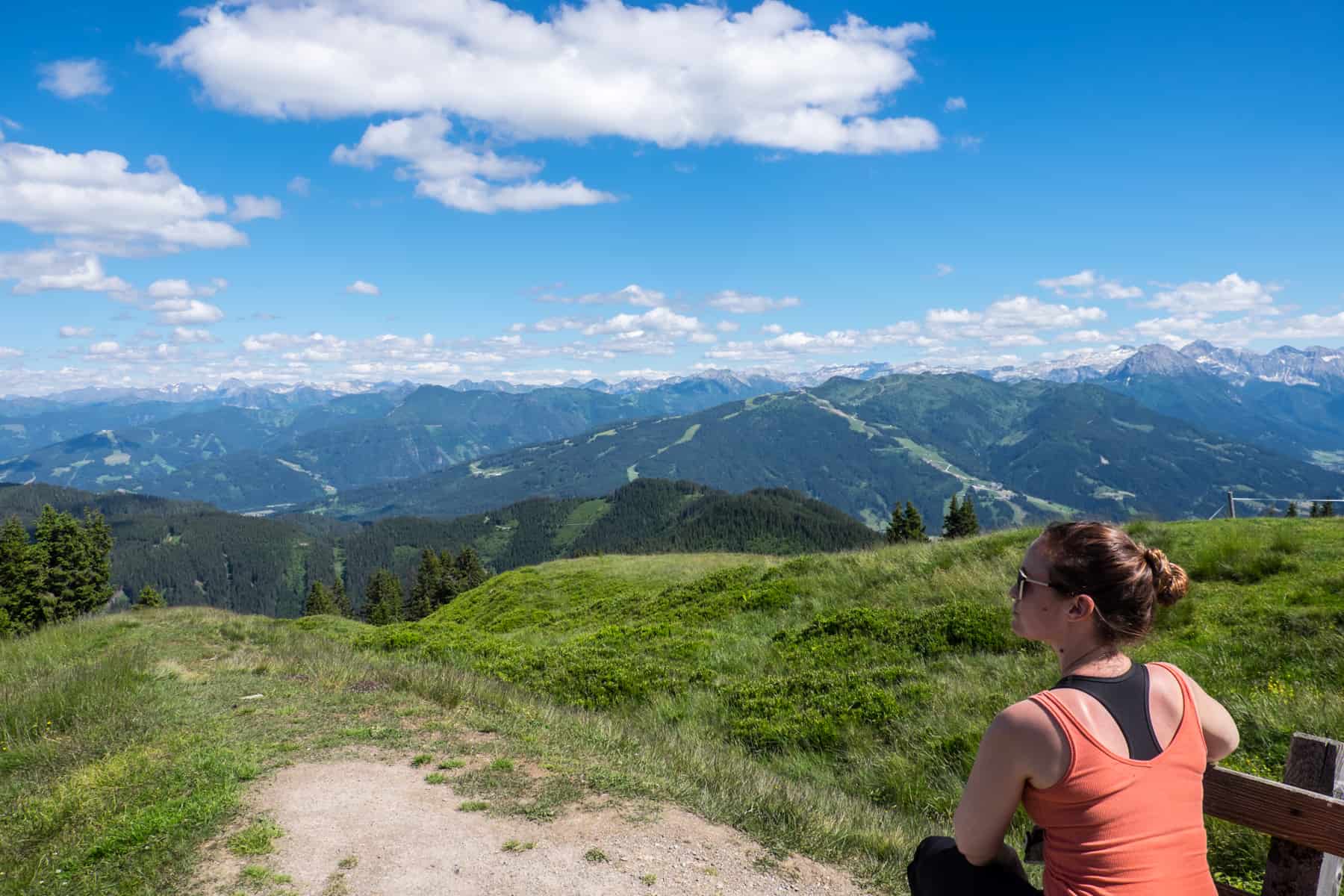
Hiking tours in the area are also available with local guides.
A Picnic at Badesee Plankenau
In further encouragement to enjoy the natural surroundings, St. Johann im Pongau tourism has partnered with local producers on picnic-basket hire. It’s packed with regionally sourced fruit and vegetables, cold cuts, cheese and sausage specialities, farmhouse bread, fruit juice, yoghurt and cake. It comes with a picnic blanket, so you are fully equipped to find a scenic spot, unpack and enjoy.
Five picnic spots have been tried and tested around town including two parks in the centre of St. Johann, one with a view of the cathedral, one riverside and one mountain area.
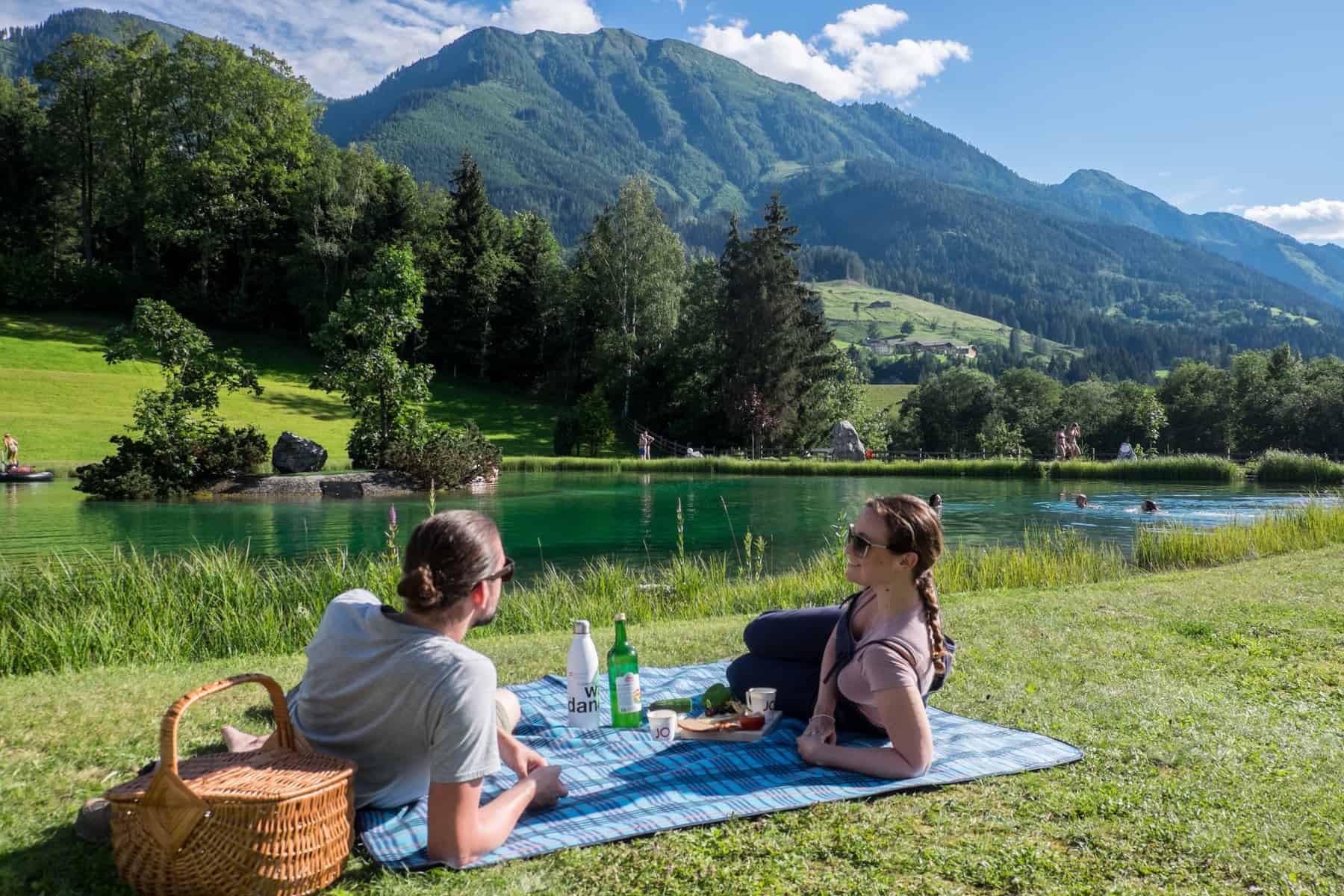
We took ours to the cosy and cooling bathing lake, Badesee Plankenau, as we love spending some time by the water, and the surrounding green lawn is perfect as a picnic spot. Entrance to the lake, filled with fresh spring water, costs €4.
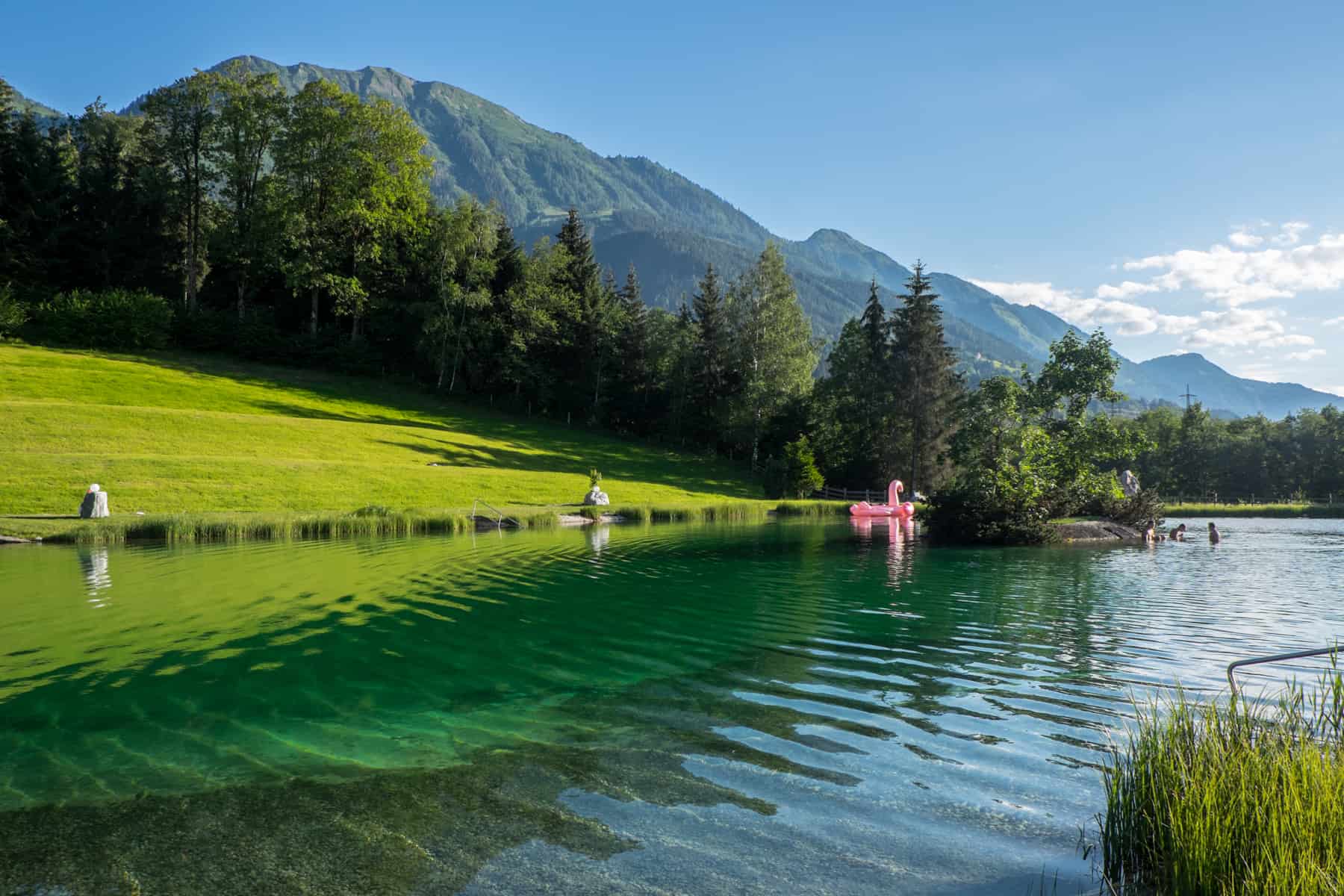
To get your picnic basket, you have to order at least 24 hours in advance directly at the Tourist Office in the centre of town and pick up the basket from one of the three partner companies – Pongauer Bauernladen, Fleischerei Urban and Metzgerei Rettensteiner-Scharfetter. The basket costs €25 for two-persons and €45 for four.
St. Johann Town and the Gothic Cathedral Centrepiece
Nature seeking aside, St. Johann im Pongau is compact enough to walk around, kick back with locals and enjoy a coffee, and browse the wares of some local designers who have stores here – the city is an established shopping centre of the region.
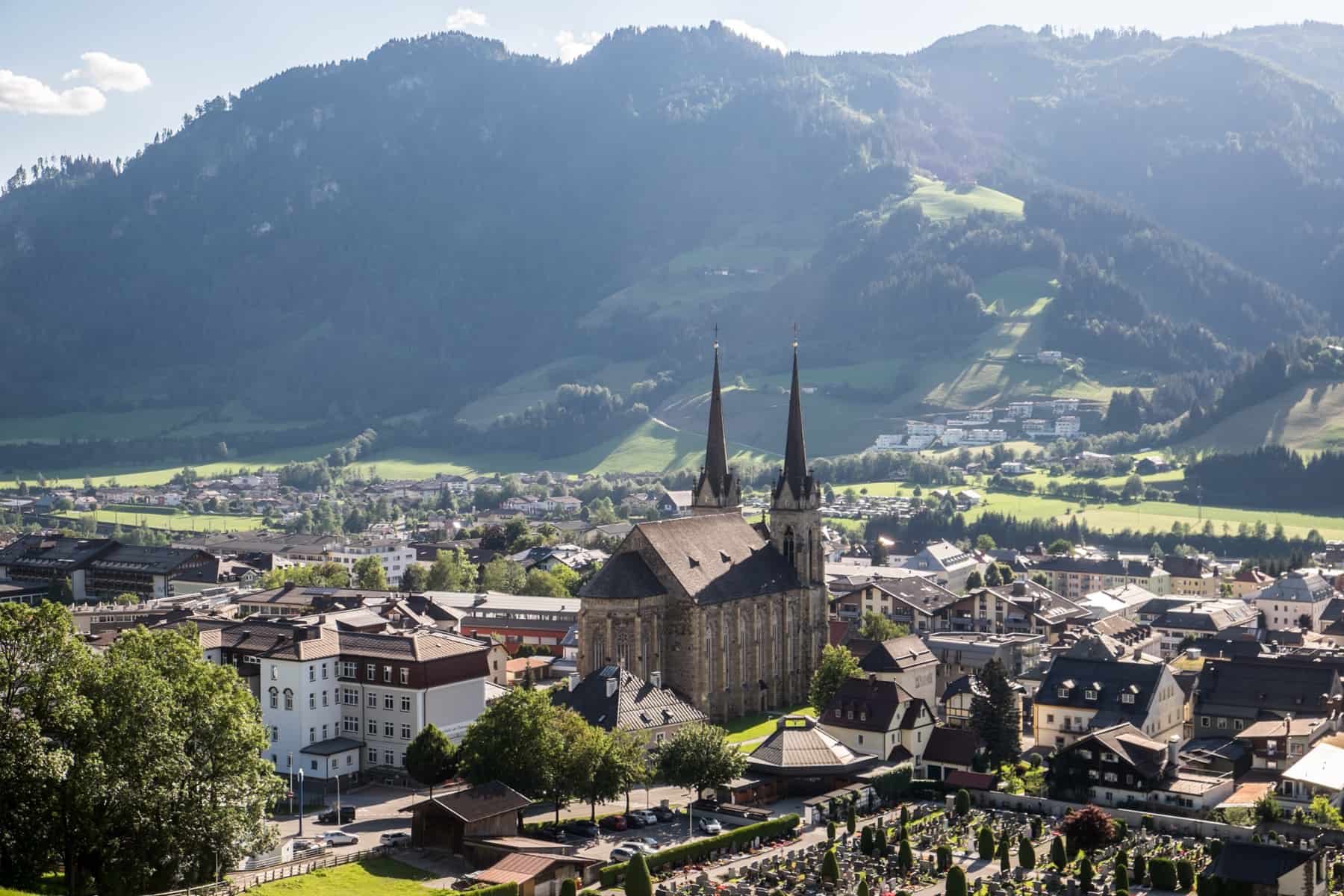
However, it’s the twin-towed Cathedral, Pongauer Dom, that takes centre stage – a symbol of the city that dominates in views from the ground to high pastures and which is said to be one of the masterpieces of the neo-Gothic architecture in Austria. The original, constructed in 1301, was replaced by the one standing today in 1855, rebuilt following destruction from a market fire. The Annakapelle chapel is one of the oldest surviving buildings in the city, although sadly it wasn’t open when we visited.
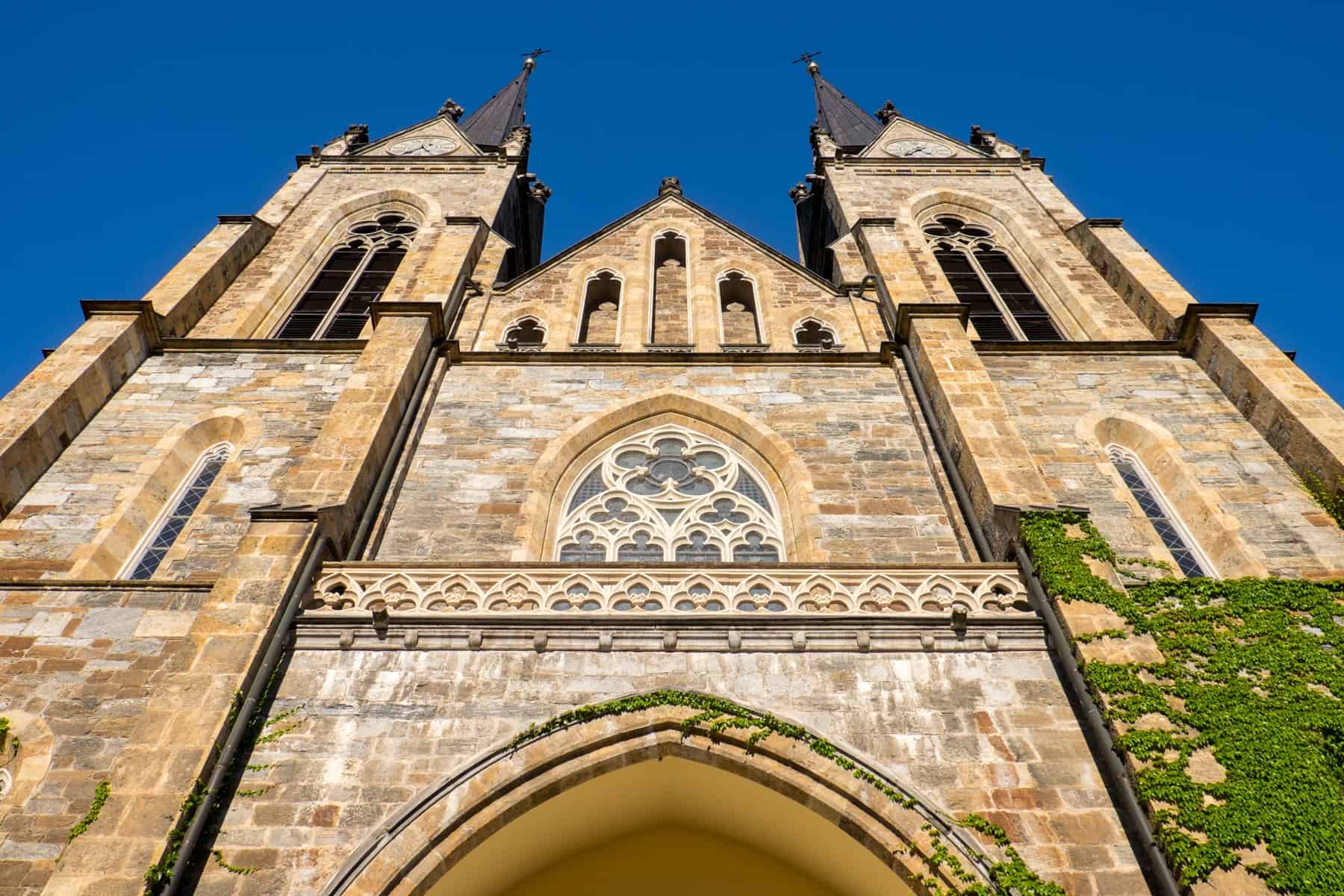
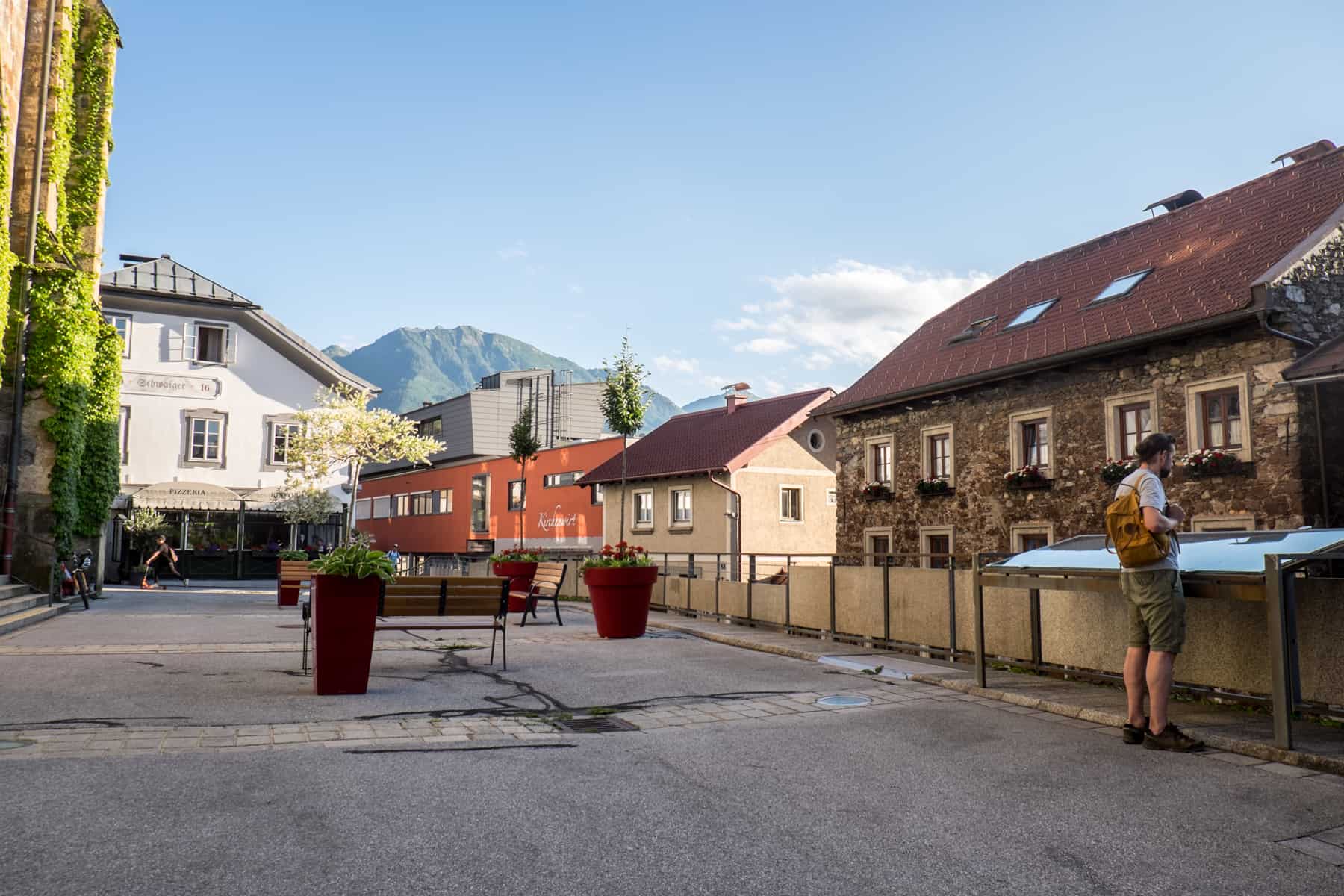
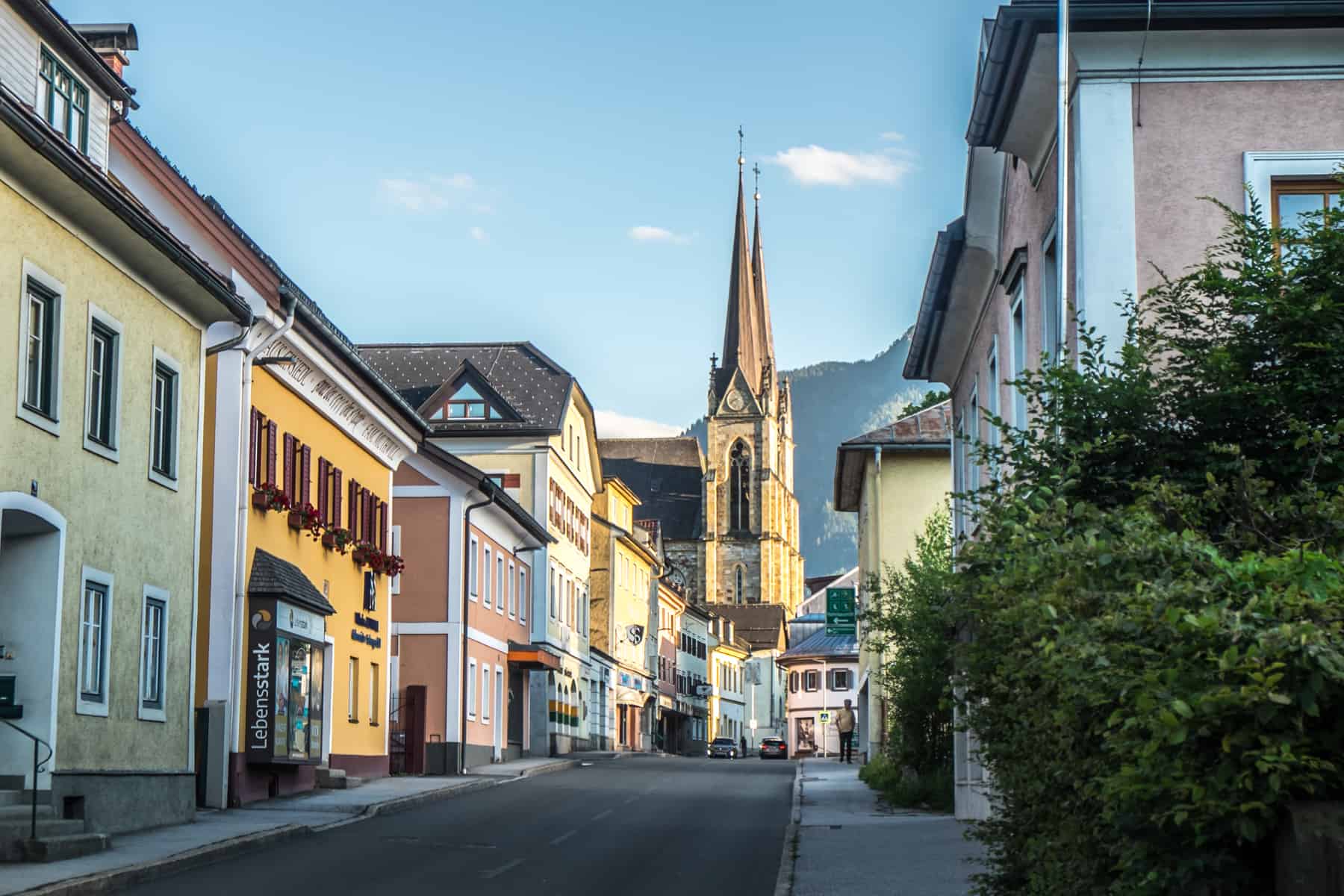
While we walked and used the car to get to some attractions and village viewpoints if you want to explore the town and around by bike here, the Snowworldshop at the Alpendorf district offers bikes and e-bikes for rent.
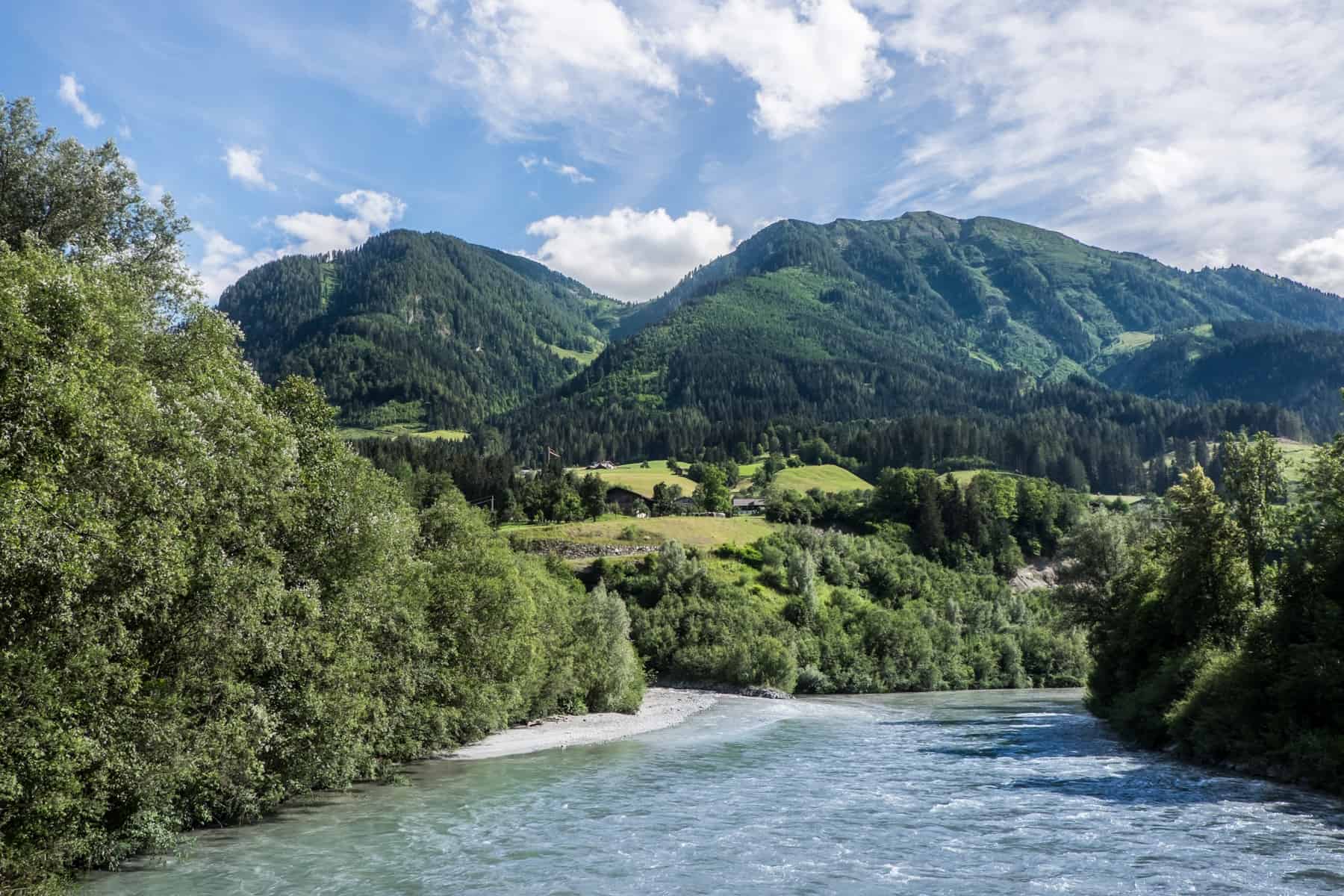
Eisriesenwelt – the largest ice cave in the world
Just 30 minutes drive north of St. Johann you can visit Eisriesenwelt – the largest ice cave in the world comprised of a frozen labyrinth of sculptures deep within the limestone alpine mountains. Eisriesenwelt translates as ‘world of the ice giants’, and on a 70-minute tour, you’ll traverse wooden walkways that take you on a frosted journey into the heart of a cave system that’s 50 to 100 million years old. Climbing wooden stairs to an extra height of 134 metres and traversing across, around and past ice layers up to 1,000 years old.
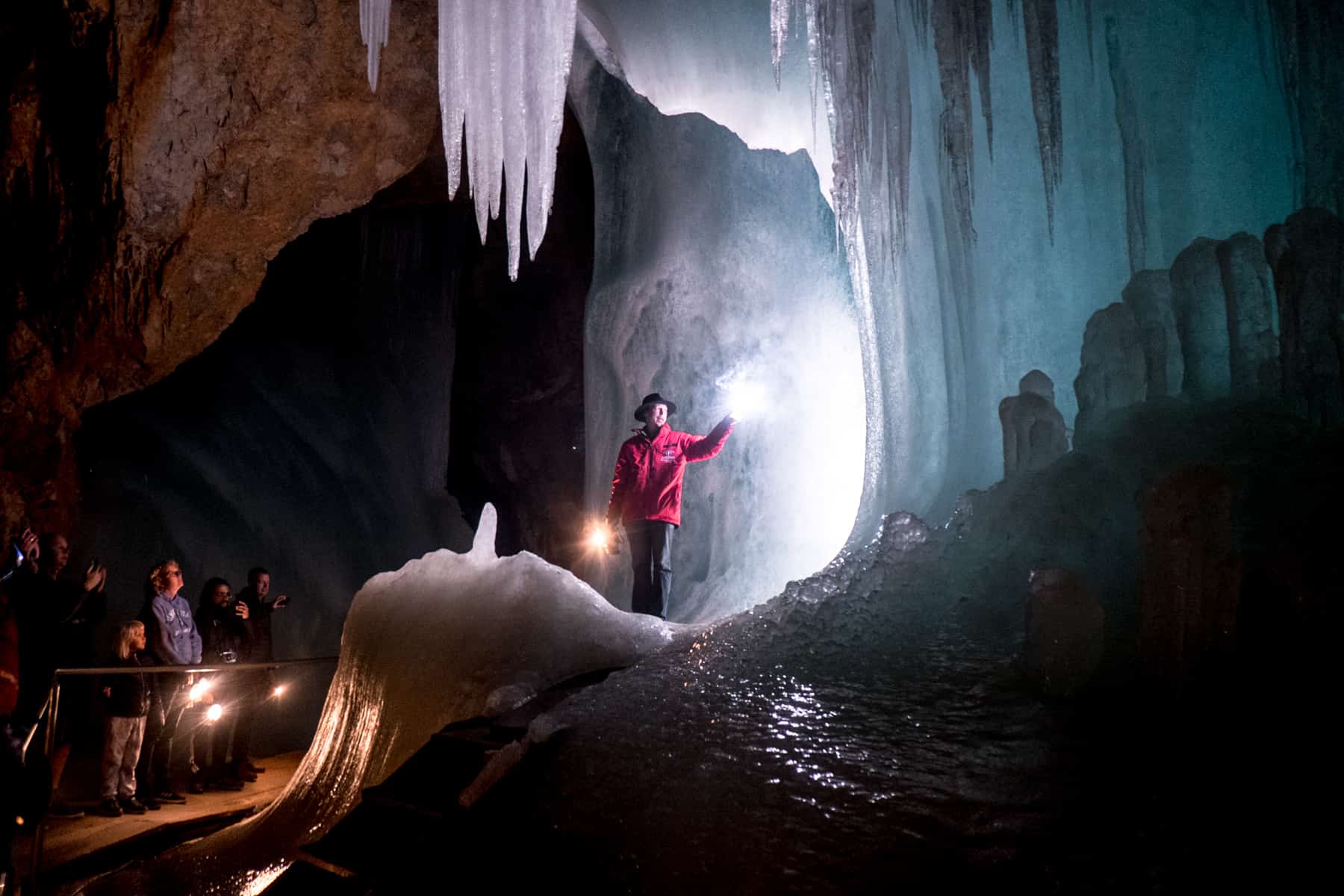
I’ve been to so many caves in my lifetime that I even went in a bit sceptical of how this visit would be different, but I was filled with a sense of wonder as soon as the door flew open with a gush of icy cold wind, and it slammed shut behind us as we entered another world. Not one of the ice sculptures is manipulated or deliberately shaped – nature at its most pure is nothing short of a spectacle.
This incredible display of science occurs when cold air flows through the caves in winter, and the spring meltwater from the snow enters the fissures of the rocks and freezes into shiny, glistening stalagmites, glittering slides, layered walls and frosted tunnels.
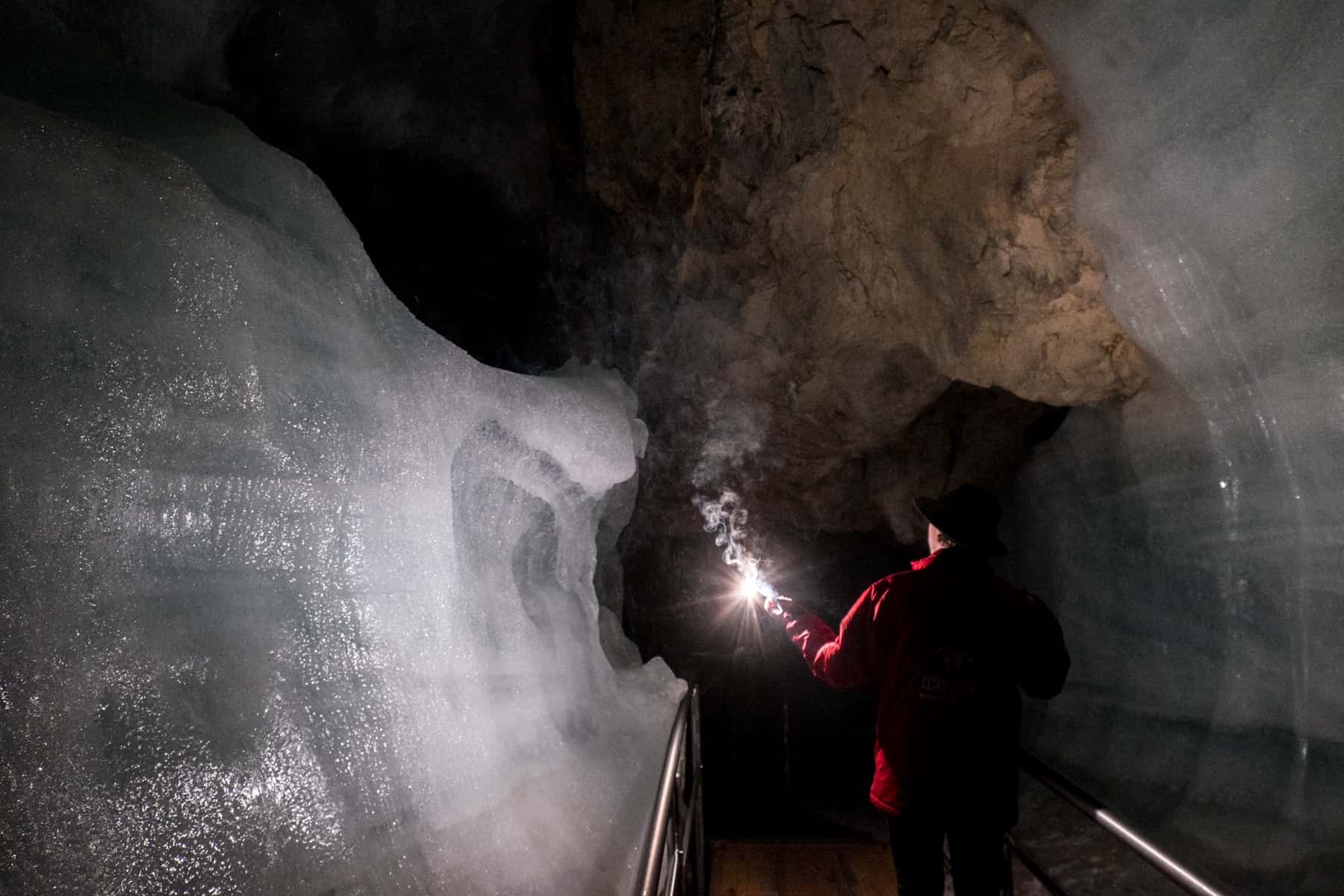
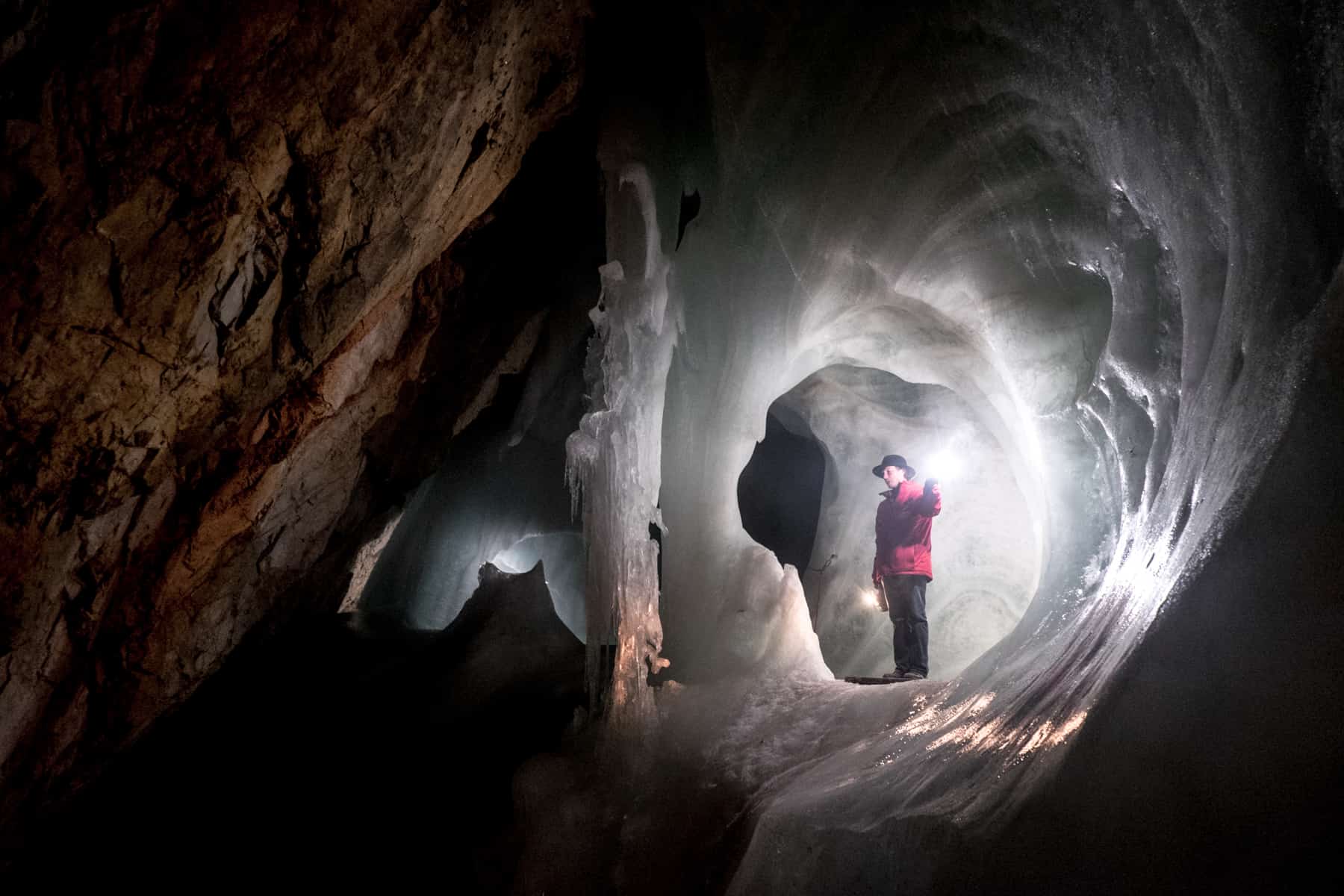
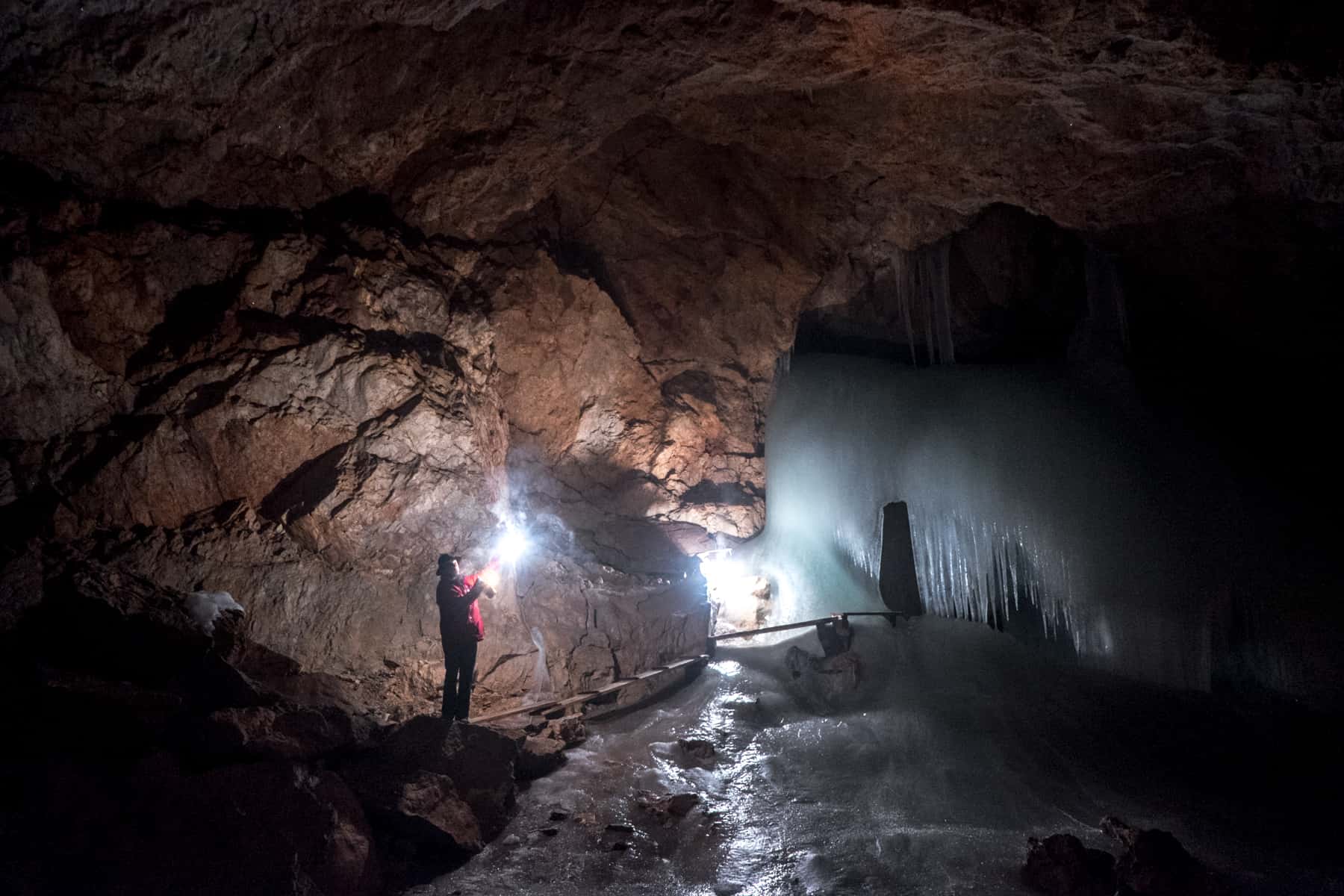
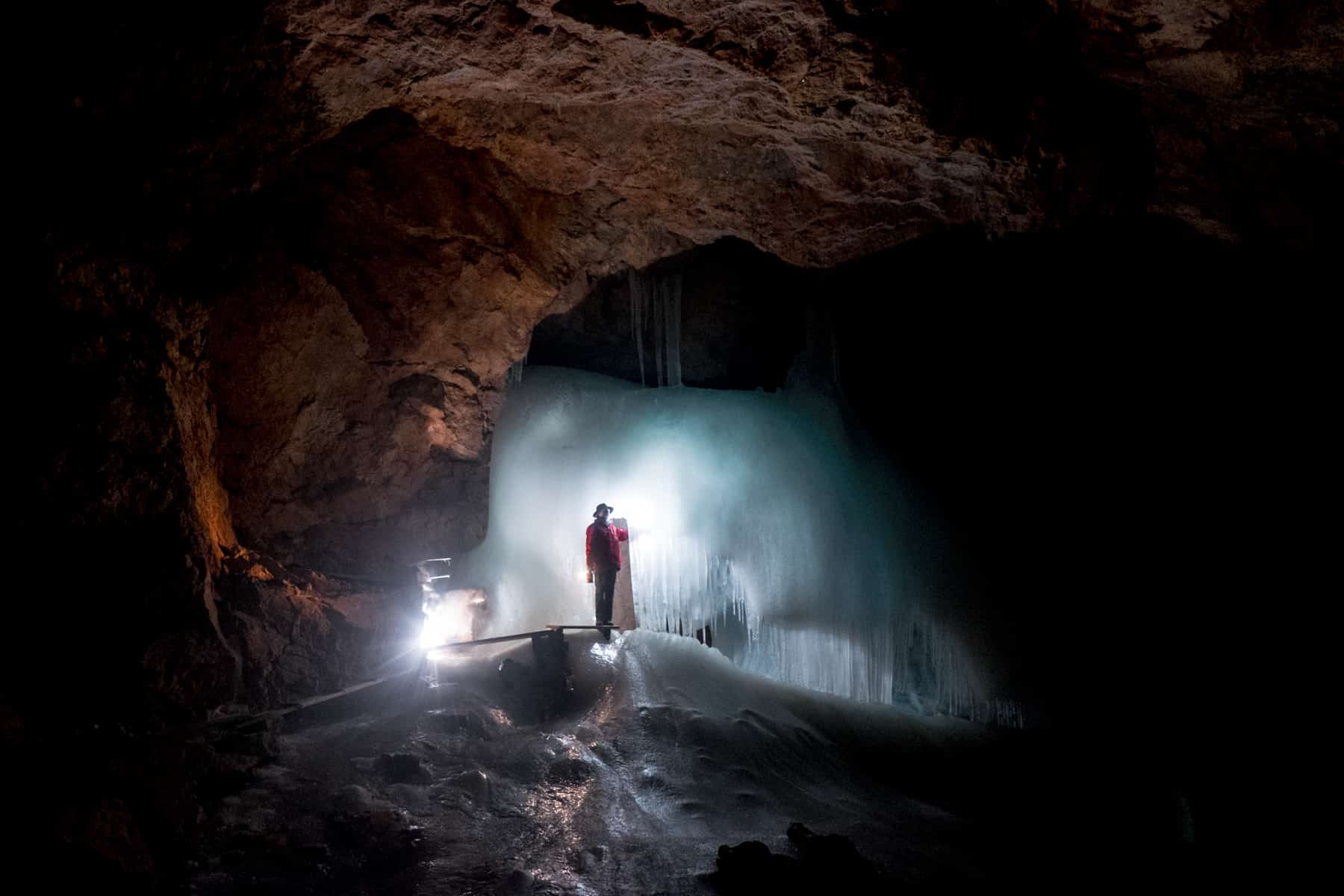
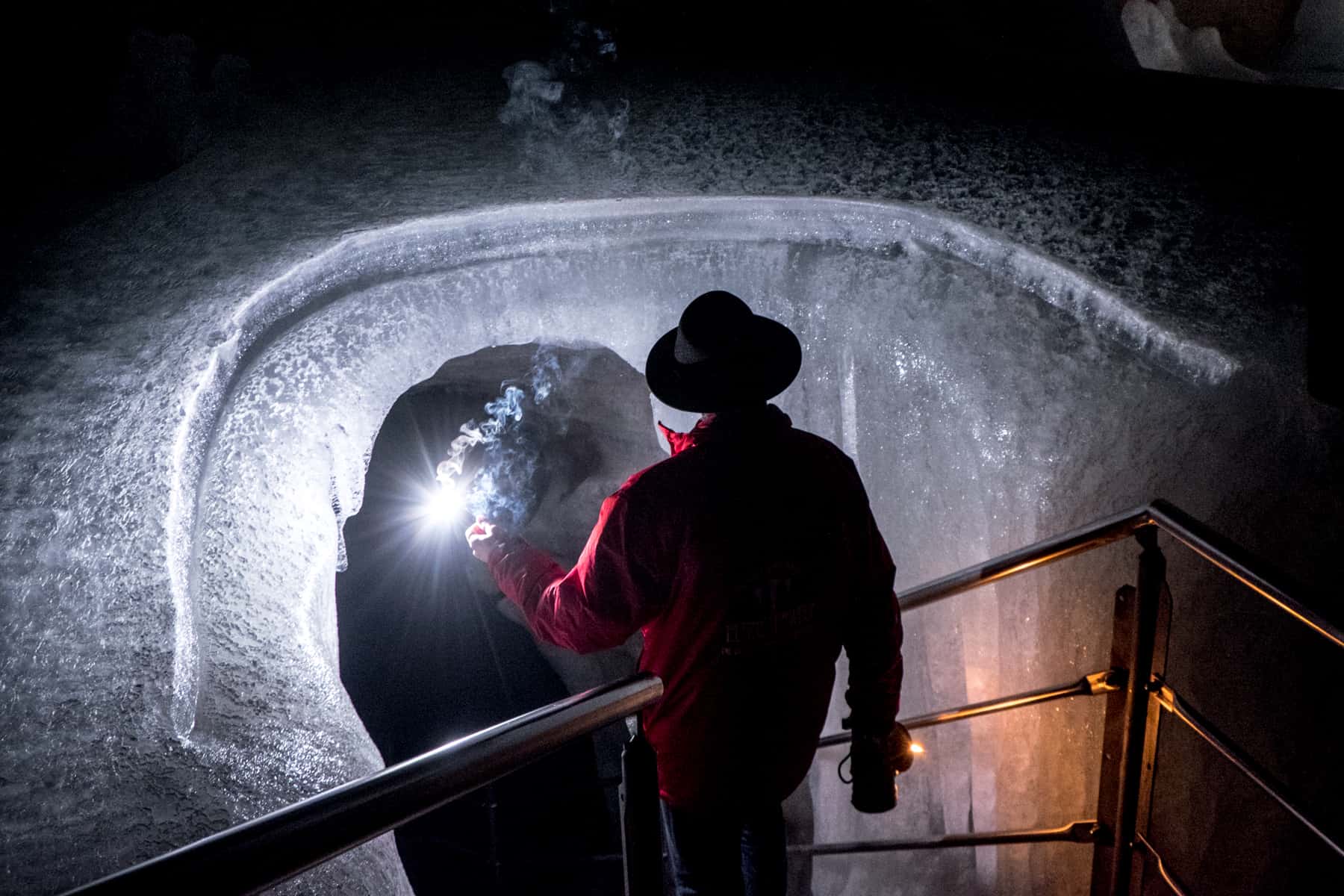
There’s no electrical lighting, with every second person given an oil lantern to carry and groups are well-paced, giving an even greater feeling of the vast space and your tiny presence within it. Like it has just been discovered, and you are a part of that expedition, even though people have been visiting for 100 years. Salzburg Cave Explorers founder, Alexander von Mörk, who continued the excavation in 1913 after Eisriesenwelt’s very first discovery, stayed – he’s buried, at his request, inside the cave.
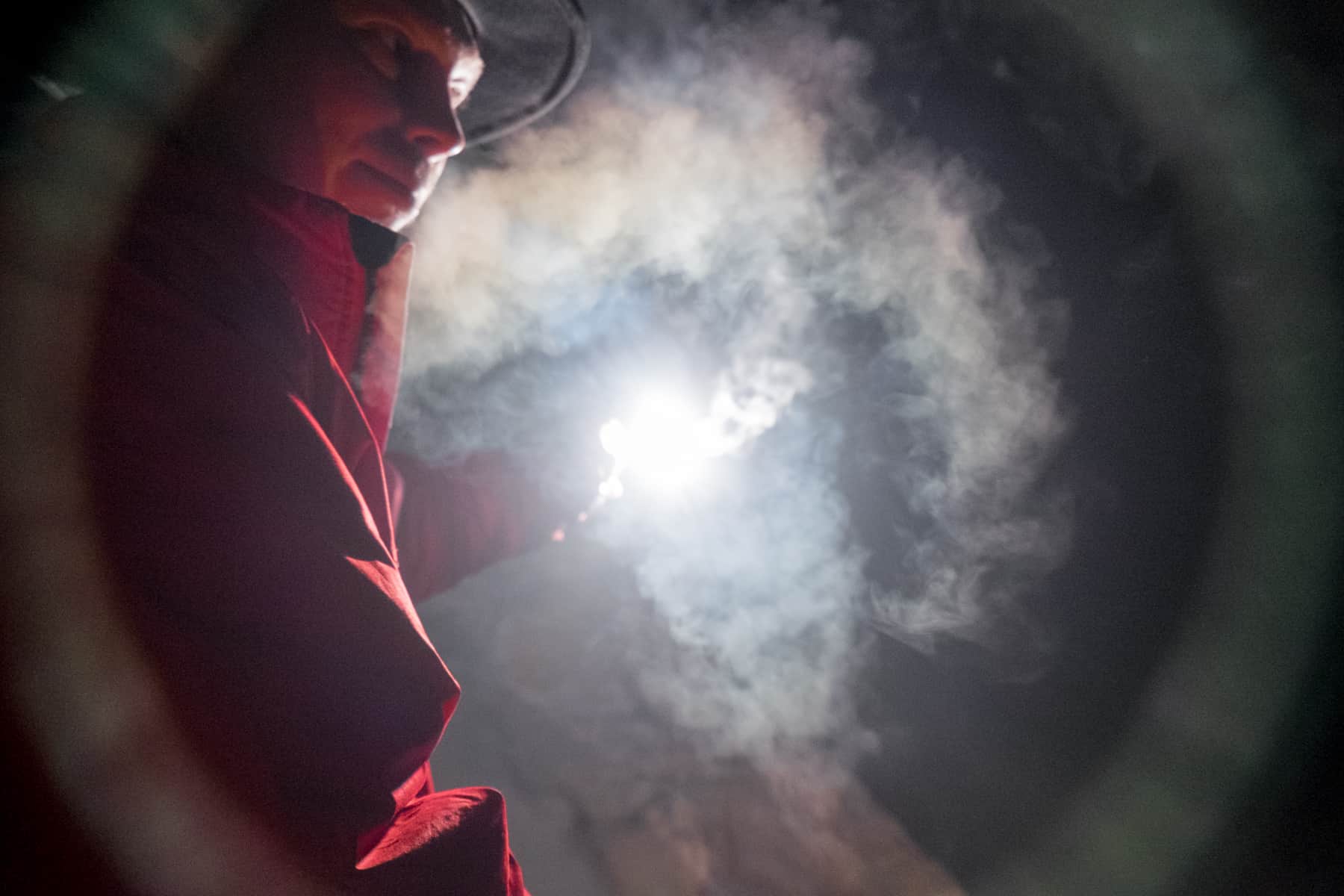
The exploration here doesn’t come without a little effort, although it’s much less precarious than the hike from the explorer’s lodge in 1920. There’s a 20-minute walk to the cable car, as a moderately taxing 20-minute walk up the last stretch of the mountain the cave entrance. A little tiring for some, but I can promise you it is worth it. Inside the cave, temperatures can low to around -1, so bring warm layers and sturdy shoes and limit the shock those who arrived in shorts and t-shirts faced.
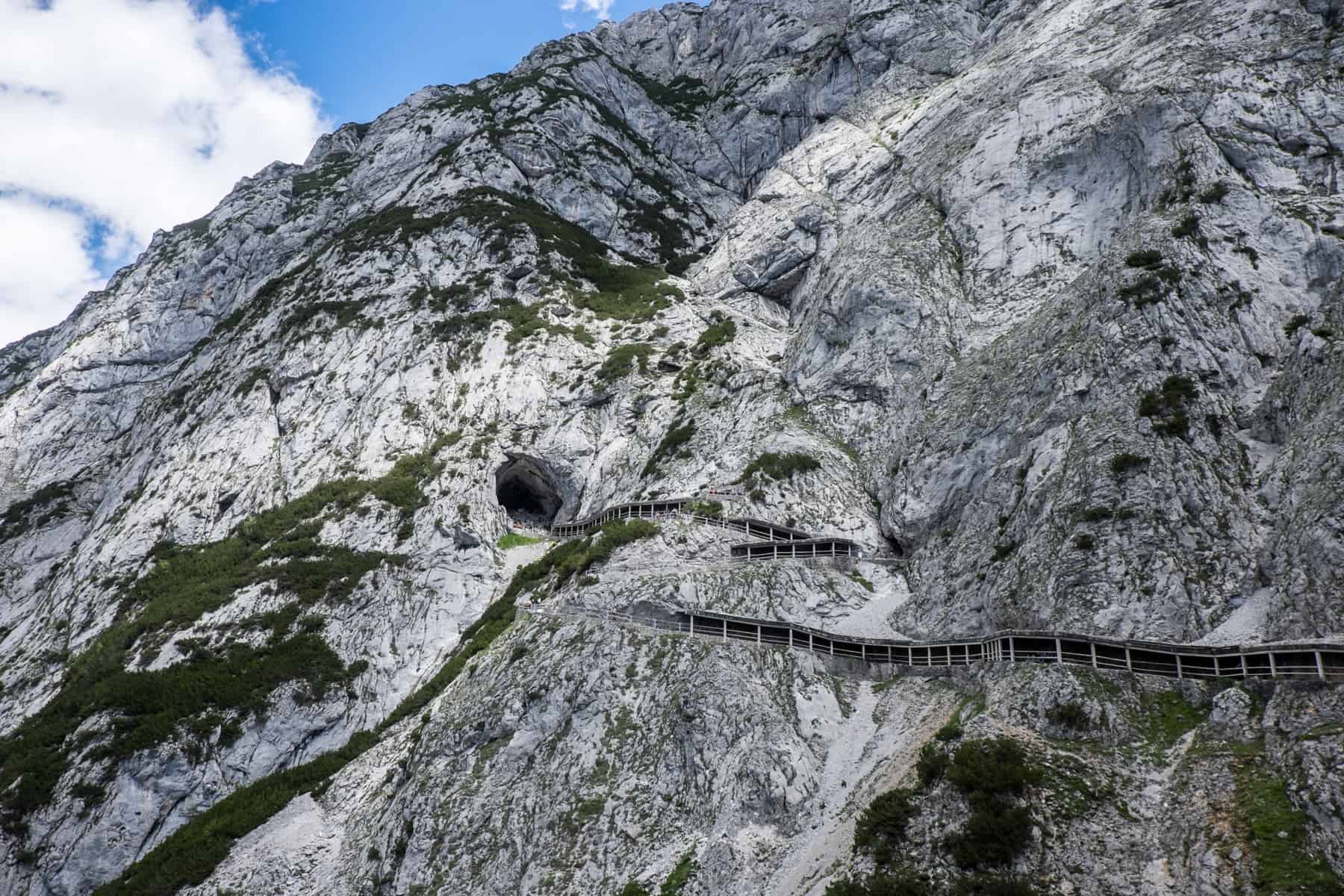
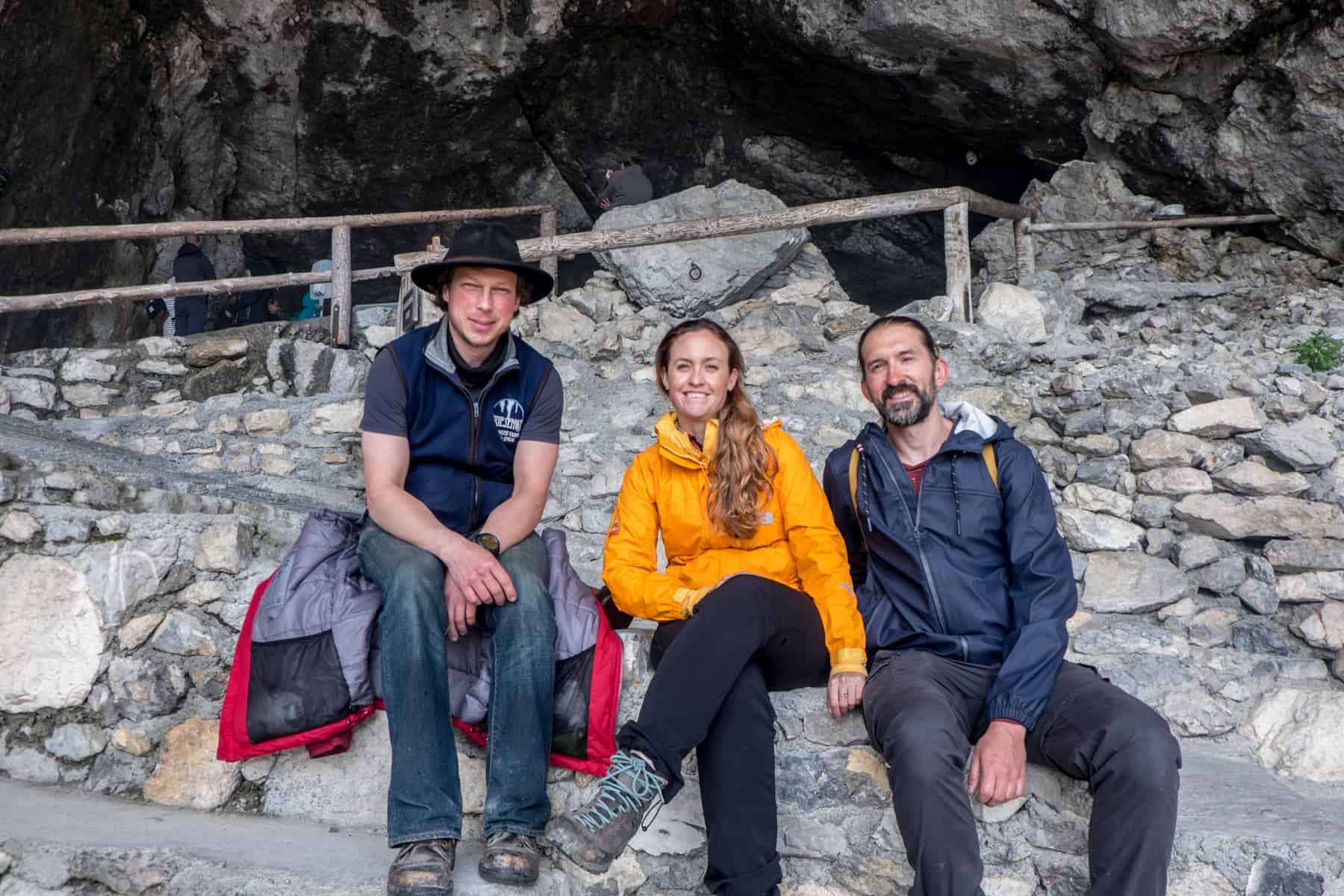
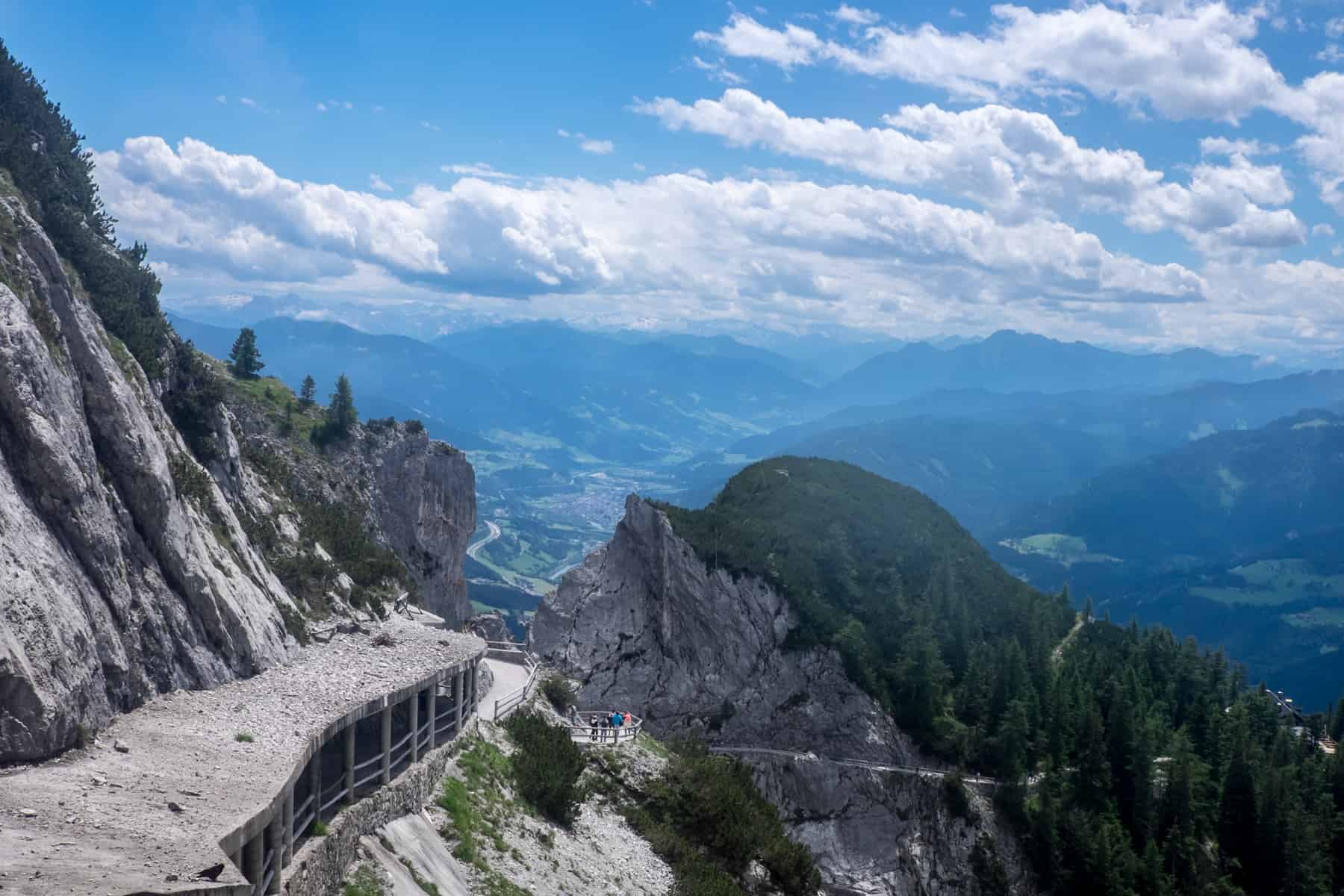
Things to Know About St. Johann im Pongau in Salzburg
How to get to St. Johann in Salzburg
Not to be confused with St. Johann in the neighbouring state of Tirol, be sure to book your tickets for St. Johann in Pongau. This train station is close to the city centre, and if staying at the Alpendorf, taxi transfers are available. Both areas are next to one another.
By car, the town is 40 minutes drive south from the city of Salzburg, accessible via the A10 highway (which continues to Villach in the neighbouring state of Carinthia). It is also a two-hour drive from Munich.
How to get around St. Johann im Pongau
If you don’t have a car, a bus network connects attractions around town, so be sure to get details from your accommodation provider on timetables and best routes. Many of the hiking routes start within the city centre, which is where the Tourism Office is based.
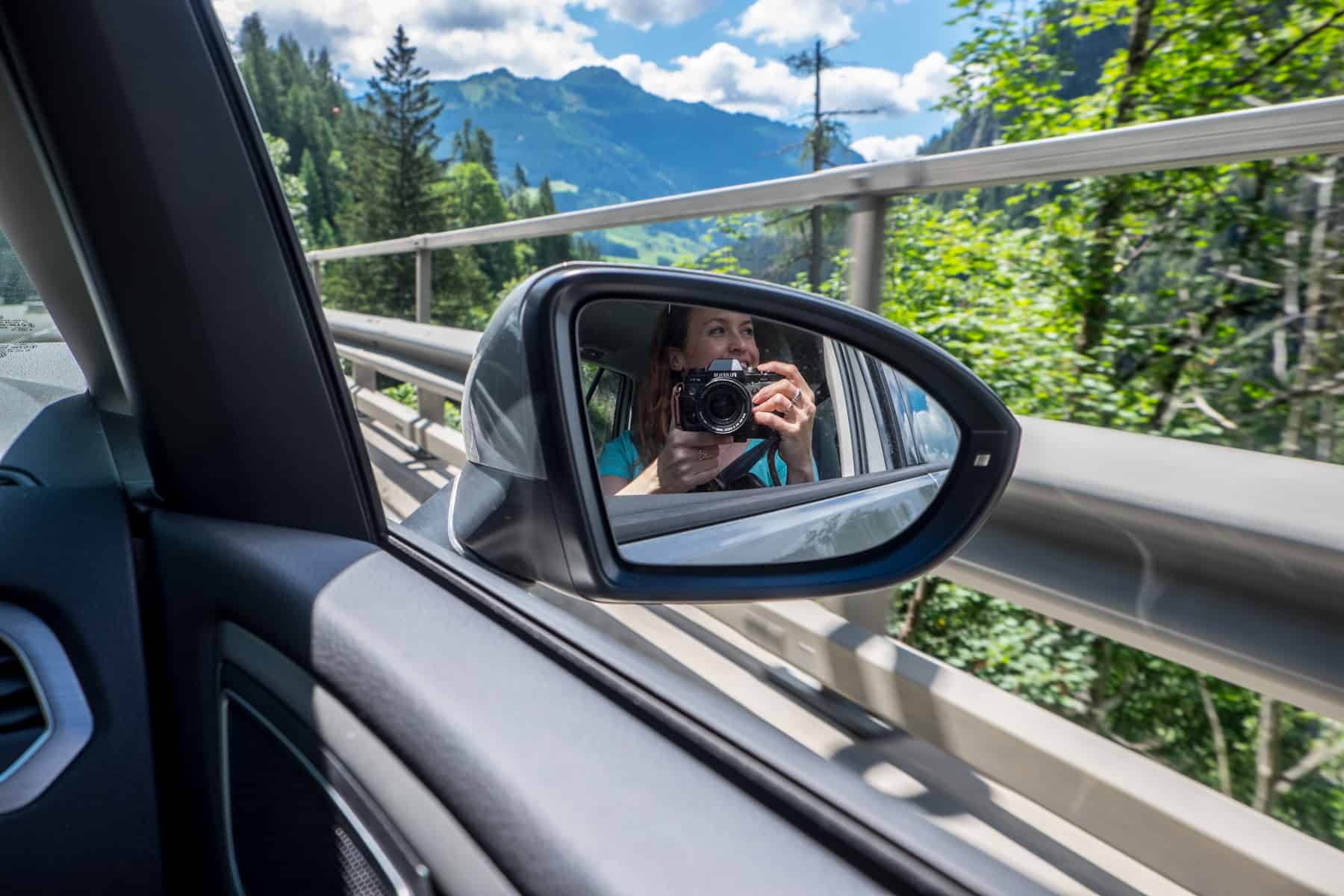
Where to Stay in St. Johann
We stayed in the Alpendorf Hotel Oberforsthof – a chalet-style wellness and spa hotel in the winter ski village turned hotel hub in the summer that’s next to St. Johann city. It’s also close to attractions including the Liechtensteinklamm, the start of hiking routes and the Alpendorf Gondola.
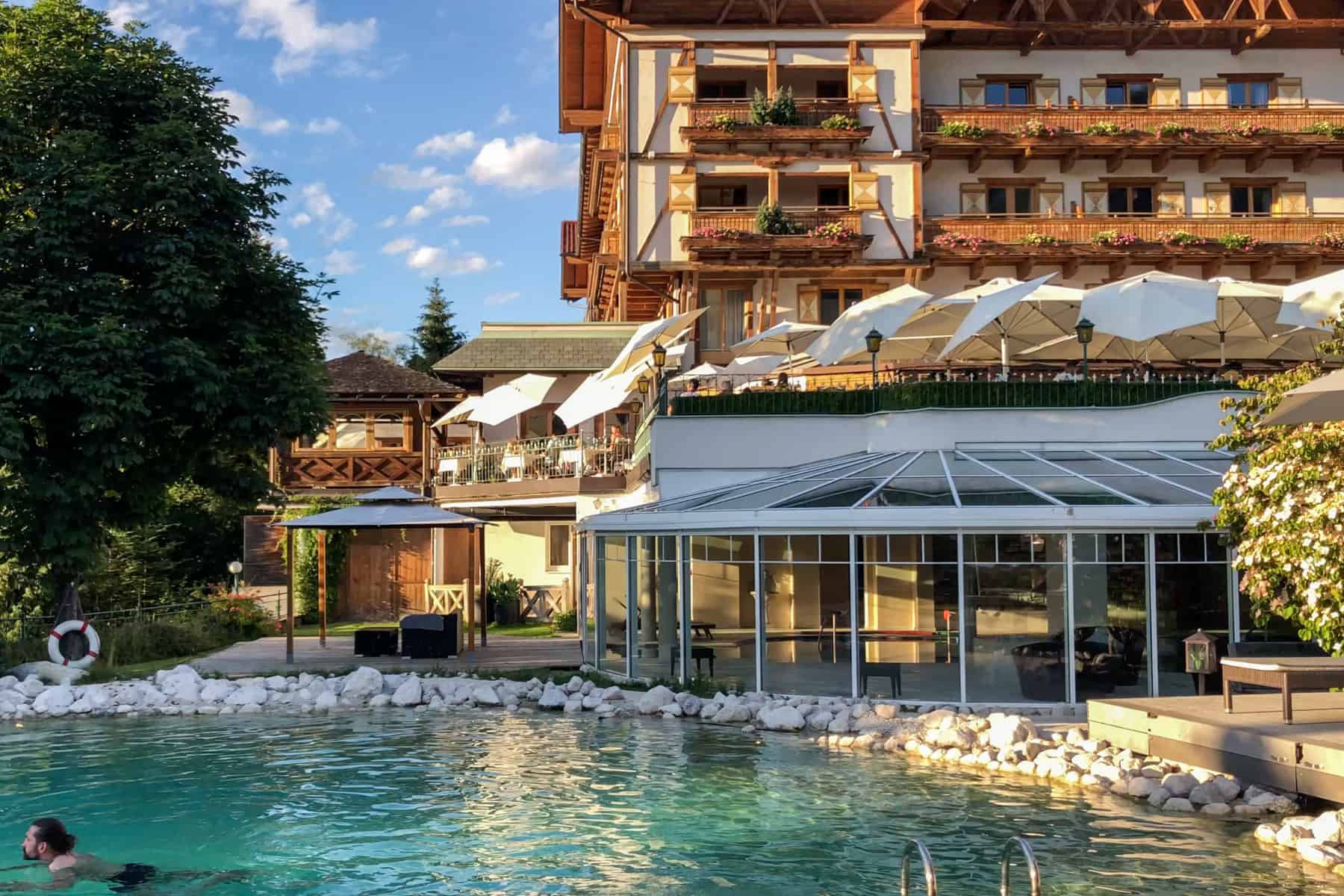
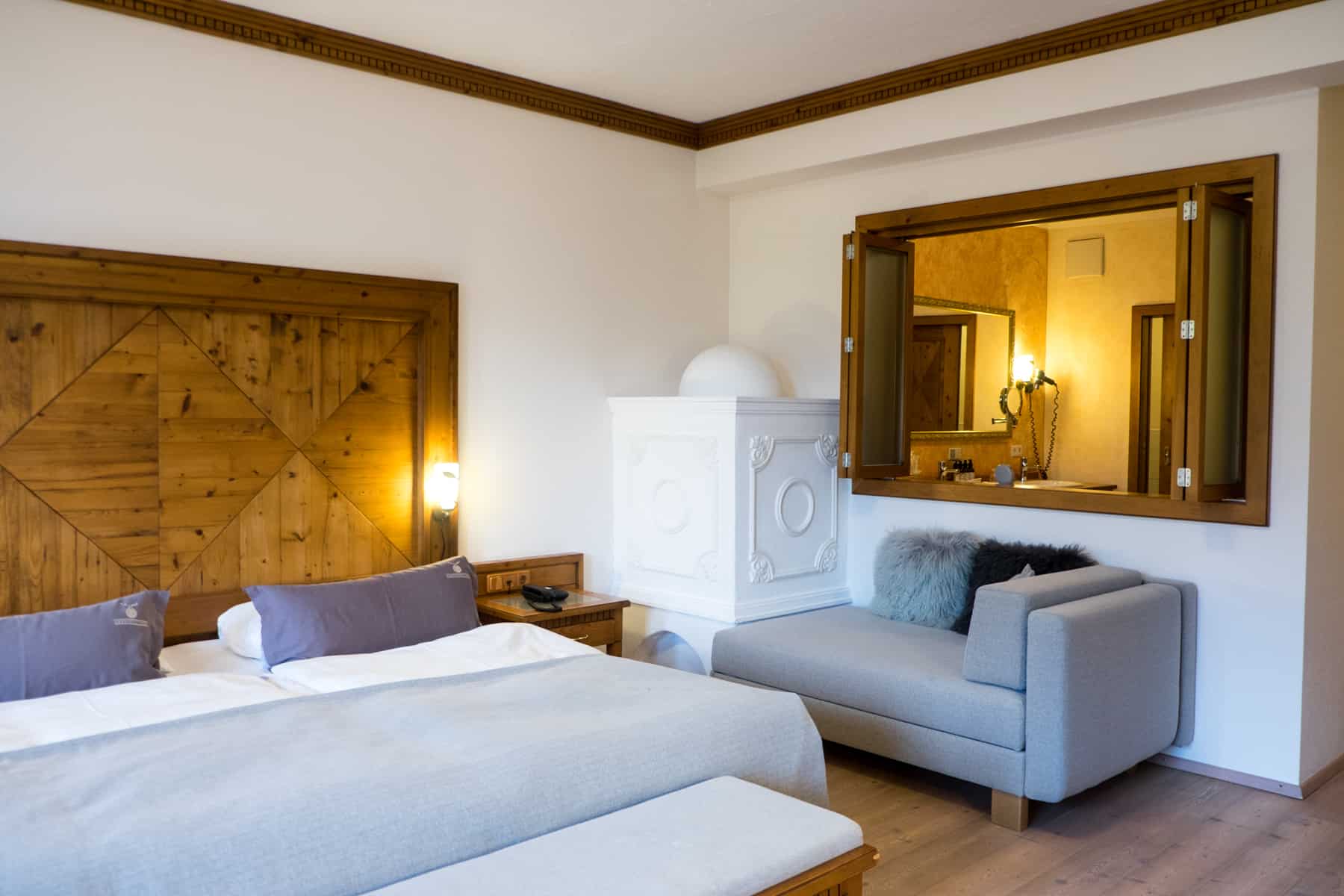
Jo Salzburg Summer Card
The Jo Salzburg Summer Card gives discounts for many of the attractions in the area, including the Liechtensteinklamm, the Alpendorf Cable Car, picnic basket, e-bike rental and use if the local hiking buses. You’ll be given a card as part of a one-night stay or more at local accommodations.
Extra Attractions in St. Johann im Pongau and Around
Burg Hohenwerfen – the 900-year-old fortress
From the lower car park and bus terminal to the winding climb up to Eisriesenwelt, you’ll spot a storybook castle on a hill, raised high above the Salzach River. This 11th-century built, 900-year-old military fortification called Burg Hohenwerfen still dominates at its 155m, overlooking Salzburgerland’s ring of towns and cities.
Considered one of the best-preserved buildings of the late middle ages, you can visit and take a tour of the towers, chapel, royal rooms and the torture chamber.
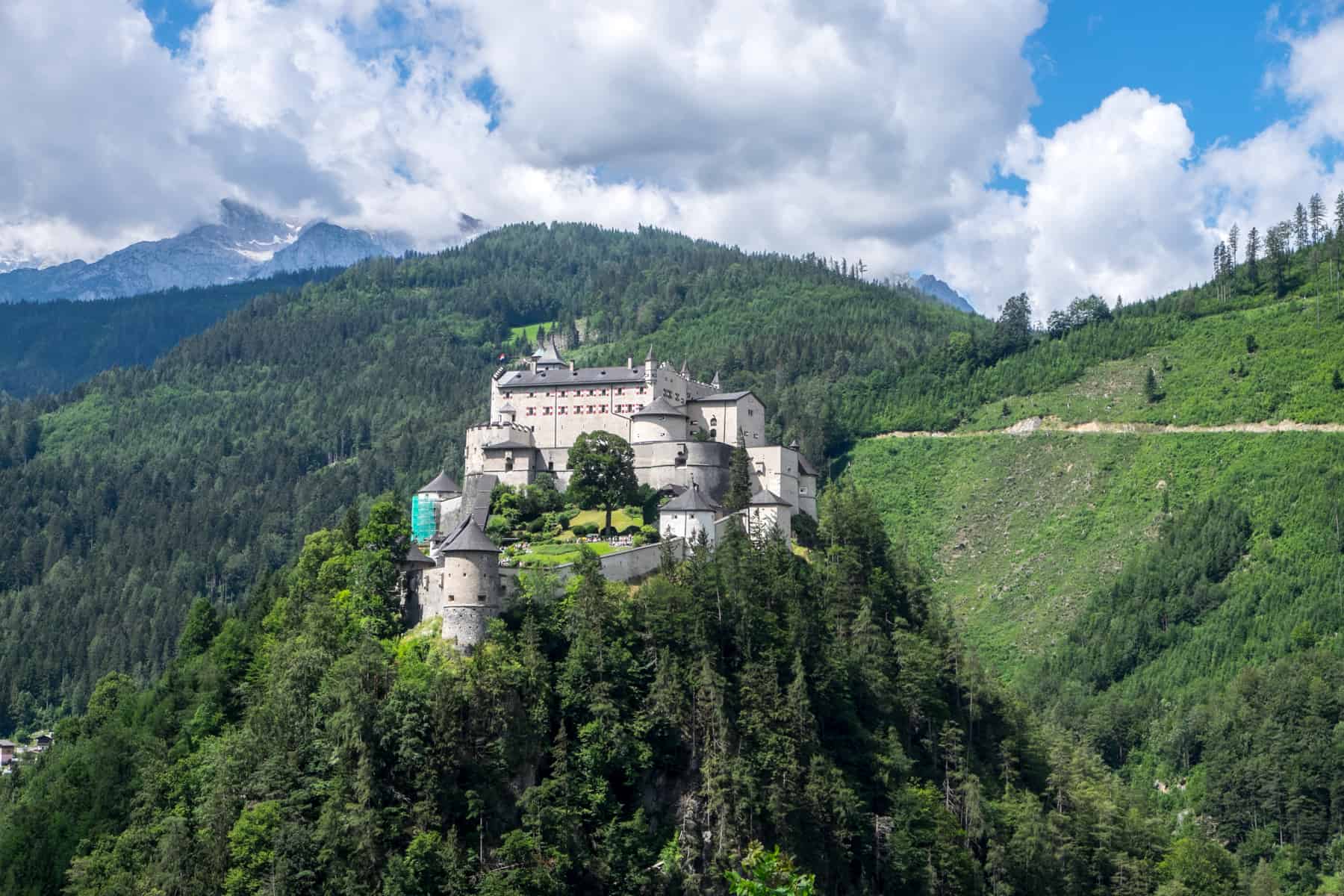
Adventure and Adrenalin
- Pleasure Elements Team takes you rafting and canyoning on the Salzach waters and in its gorges and Flugschule Austriafly offer tandem paragliding in Werfenweng (am Bischling), Salzburg and St. Johann im Pongau.
- The Geisterberg (Ghost mountain) is fun for families with activates at the top of Gernkogel Mountain at 1,800 m reachable via the Alpendorf Gondola. Without kids, it’s suitable for those craving new walking trails and panoramic surroundings.
- St. Johann is also situated in a 300km long Tauern Cycle Route that leads from Krimml through St. Johann and Salzburg to Passau for those looking for a more extended biking tour.
Further Planning for Visiting St. Johann in Salzburg
- Visit St. Johann im Pongau’s official tourism website under the brand JO Salzburg and Austria’s official travel page for further information and planning tips.
- Combining St. Johann im Pongau with Salzburg city?
READ MORE: Why You Should Visit Salzburg – The Metropolis Beyond Mozart and the Sound of Music
Further Reading – Austria’s Ski Slopes to Summer Trails
If you are thinking of visiting other ‘ski to summer’ destinations, these Austria travel guides have you covered.
- St. Anton in Summer – Redefining Austria’s Birthplace of Alpine Skiing
- Lech in Summer – The Green Jewel of Austria After Ski Season
- Alpbach in Summer – The Famed Tyrolean Valley in a Different Season
- Wildschönau in Summer – Alpine Views and Adrenalin Skies
The post Summer in St. Johann im Pongau, Austria – The Salzburg Mountain City After Ski appeared first on Borders Of Adventure.
from Borders Of Adventure https://www.bordersofadventure.com/summer-in-st-johann-im-pongau-austria/
VietNam Travel & Food Magazine Vina.com offers News✅ Travel info✅ Food Recipes✅ Photos✅Restaurant Guide at Vina.com https://vina.com/travel/nightlife/ https://vnfoodandtravelblog.blogspot.com/

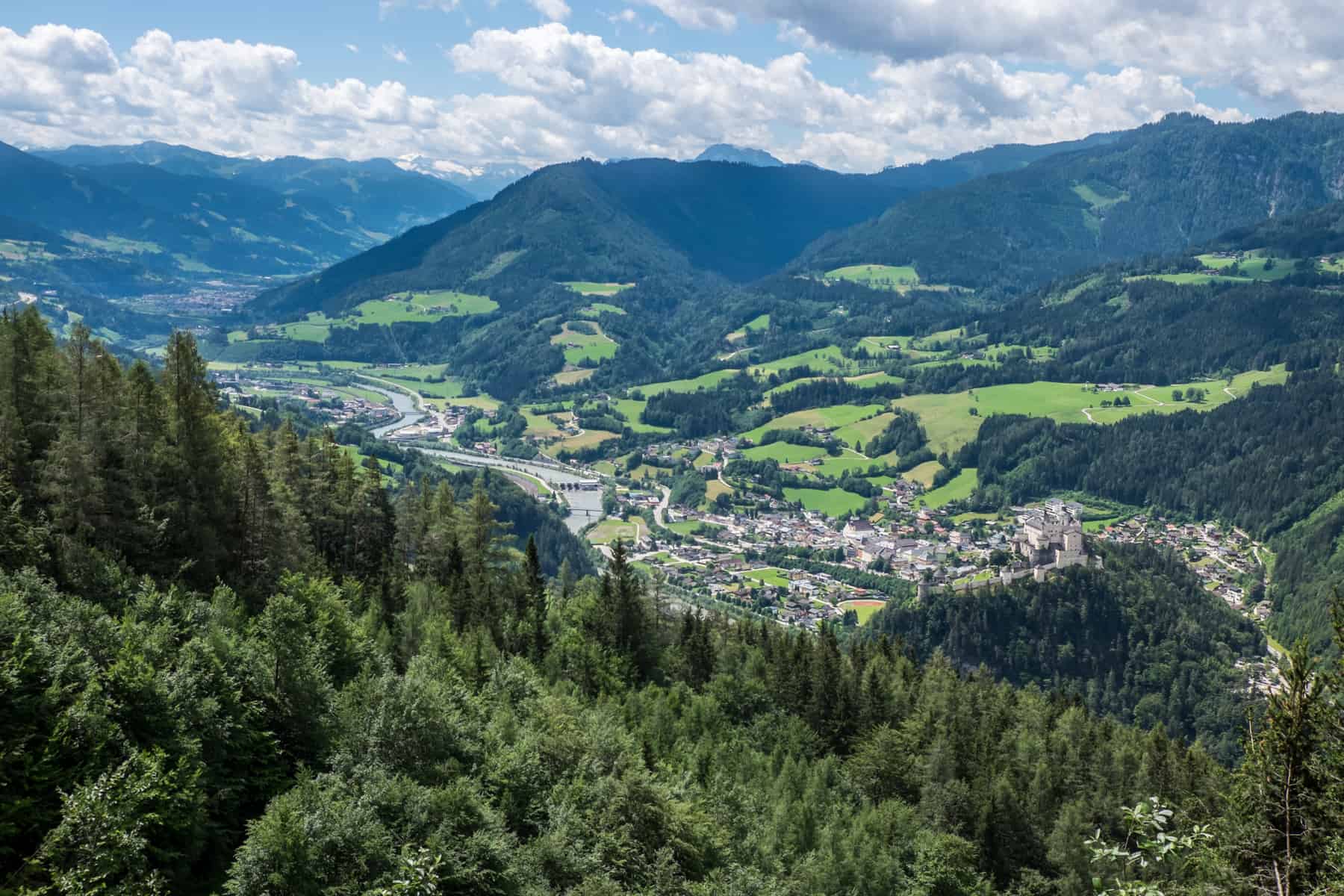
0 Nhận xét